Peter Marsh
Robin Marsh
Francis Cherutich – Guide
Martin – Driver
10 April to 5 May 2023
Introduction
We initially booked to go on a Rockjumper Mega Kenya trip running in March/April 2023. When Rockjumper announced a second Mega trip for April/May 2023 we changed to the later trip. Unfortunately there were not enough bookings for the later trip and it was cancelled. Rockjumper offered to run a private trip with the same itinerary. There were two options, a Rockjumper guide or a local Kenyan guide. For reasons of economy, as well as the opportunity to get the cultural benefits of travelling with a local, we chose the local guide option. This was a choice that we did not regret for a moment. Our guide, Francis Cherutich, was meticulous in his organisation, great company and had very high quality guiding skills. He and our driver, Martin, formed a great team. We enjoyed their company and guidance enormously.

The route was that selected by Rockjumper for their 26 day Mega Kenya tour, they also provided the checklist for the trip. The ground agent was Cisticola Tours Ltd from Nairobi who supplied the guide, the driver and the vehicle.
I bought a Sony RX10iv camera just before leaving Australia. All the photographs illustrating this report were taken by me using this camera.
The trip started in the Simba Hills and, after visiting the Tsavo parks, went roughly anti-clockwise around Mt Kenya to the Aberdare NP. It then headed generally west to the Kakamega Forest before going south to Maasai Mara and east to finish in Nairobi.
The vehicle was a Toyota Land Cruiser TSV. It reminded me of my good self – fantastic going downhill, OK on the flat and very slow uphill! It did however provide comfortable seating, good game and bird viewing through its pop-top roof and trouble free transport. It was driven very safely by Martin.
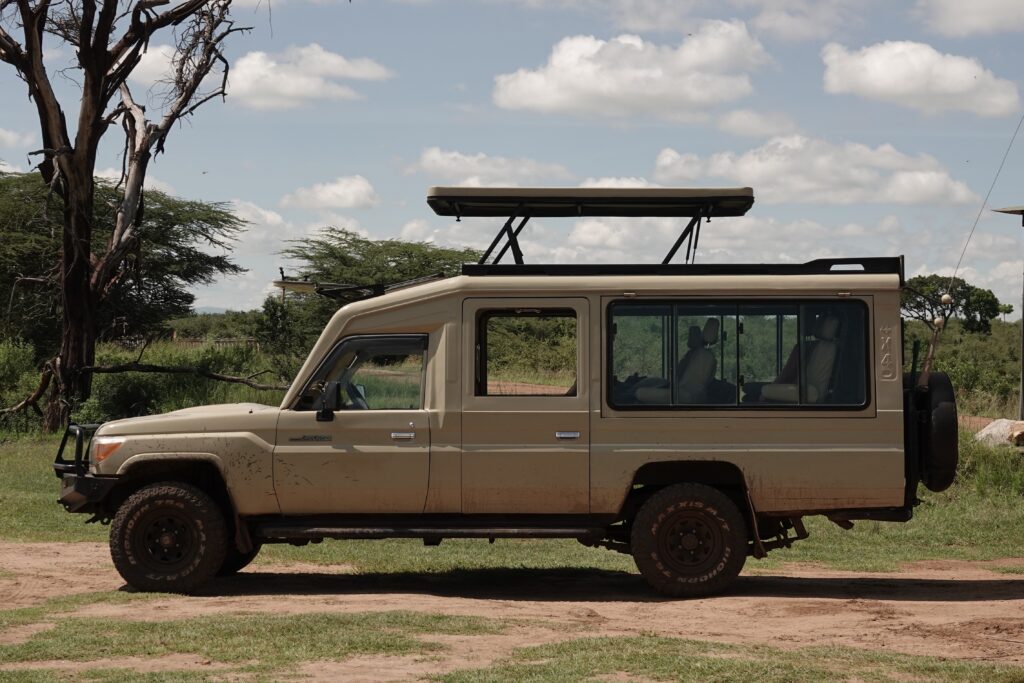
There were a few differences in the way bird tours are delivered in Kenya as compared with most other areas of the world. There are essentially two modes of operation. Where animals dangerous to mankind are present, such as within most National Parks, one is confined within the vehicle unless stopping at a designated spot where exit from the vehicle is permitted. All birding is done from within the vehicle and the pop-top roof makes this feasible. For obvious reasons the authorities are concerned about injury or death of visitors due to wild animals. It does mean one has to be careful in planning ones pee spots! Where there are no such wild animals you can walk along the roads and tracks while being careful not to encroach on private land. Another difference is that on most days we took a lunch box from the hotel or lodge at which we had stayed the night before. This avoided the need to find an eatery in the middle of the day in some remote spot in the Kenyan countryside. It did however result in a few quite odd lunches!
One difference from many birding trips was self imposed. As this trip was a part of my “7K by 80 Project” I wanted to concentrate our efforts on seeing birds that were new for my life list. We still had time to admire old friends as we bumped into them but we skipped a few habitats that would not have harboured anything new. As a result we saw fewer birds that we might otherwise have done. We saw 532 bird species of which 118 were new to me. Francis was assiduous in studying the list I had provided to him of my target birds. He was amazing at picking up targets as we were driving. Needless to say we enjoyed a host of mammalian sightings- 46 to be precise.

We arrived just as the “long wet” was starting in the highland areas. The first few days were in the coastal lowlands where the rain had not yet started. The country there was very dry and the weather hot and humid. We missed a number of desired species under these conditions. As we moved up-country the conditions improved markedly. It became cooler and the country was already greening up from the rain that had fallen there. We generally experienced cloud development in the afternoons and had quite frequent late afternoon or evening thunderstorms leading to fresh clear mornings. By the time we got to Maasai Mara the grass was about 1m high which made finding ground dwelling birds problematic. Again we probably missed a few desired species.
10 April 2023
We were picked up near Mombasa by our guide Francis and driver Martin on the morning of 10 April and driven to the lovely Shimba Hills Lodge. We arrived at 1:00pm and had lunch before heading out at 2:30pm for the Shimba Hills National Park. We cruised the well maintained roads in the park before returning to the lodge at 6:30pm.
Birds seen on the drive from Mombasa to Simba Hills included Bateleur, Black-headed Heron, Eurasian Golden Oriole, European Roller, the ubiquitous Fork-tailed Drongo, Little Swift, Long-tailed Fiscal, numerous Red-backed Shrike, Trumpeter Hornbill and Western Cattle Egret. The introduced House Crow was around in plague proportions in this area and is regrettably spreading. In the National Park interesting observations were African Palm Swift, Black-bellied Starling, Black-headed Apalis, Chestnut-fronted Helmetshrike, an unexpected Coqui Francolin, Eastern Nicator, a noisy Flappet Lark, Green Barbet, Little Yellow Flycatcher, White-eared Barbet and Yellow-rumped Tinkerbird. Returning to the lodge we came across 4 young bull elephants.
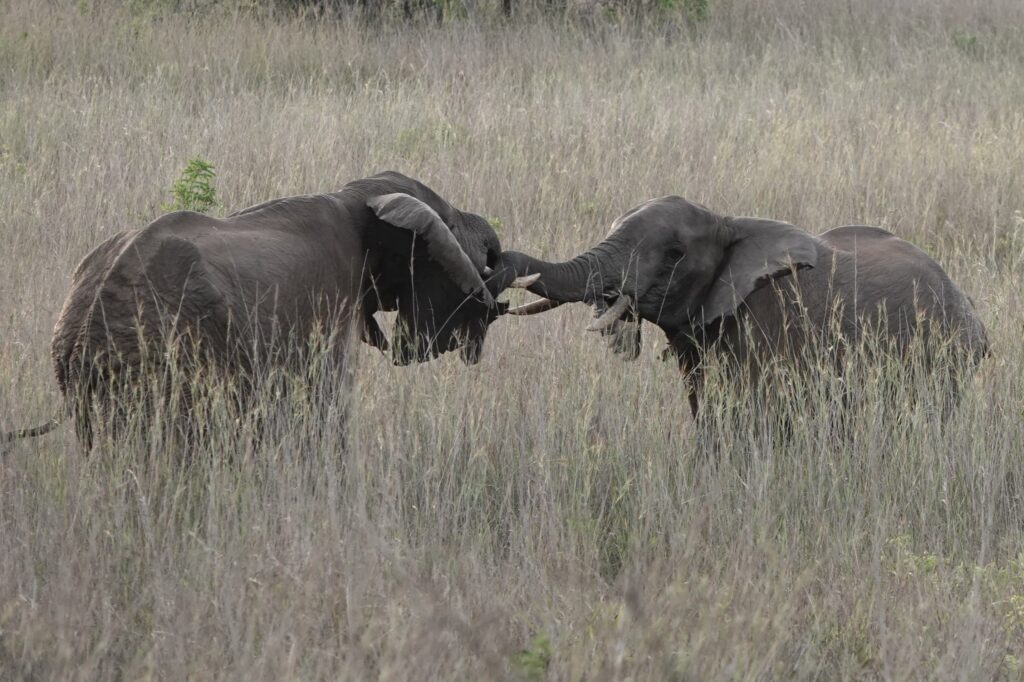
The Shimba Hills lodge was most comfortable, the food good and it is located in deep forest.
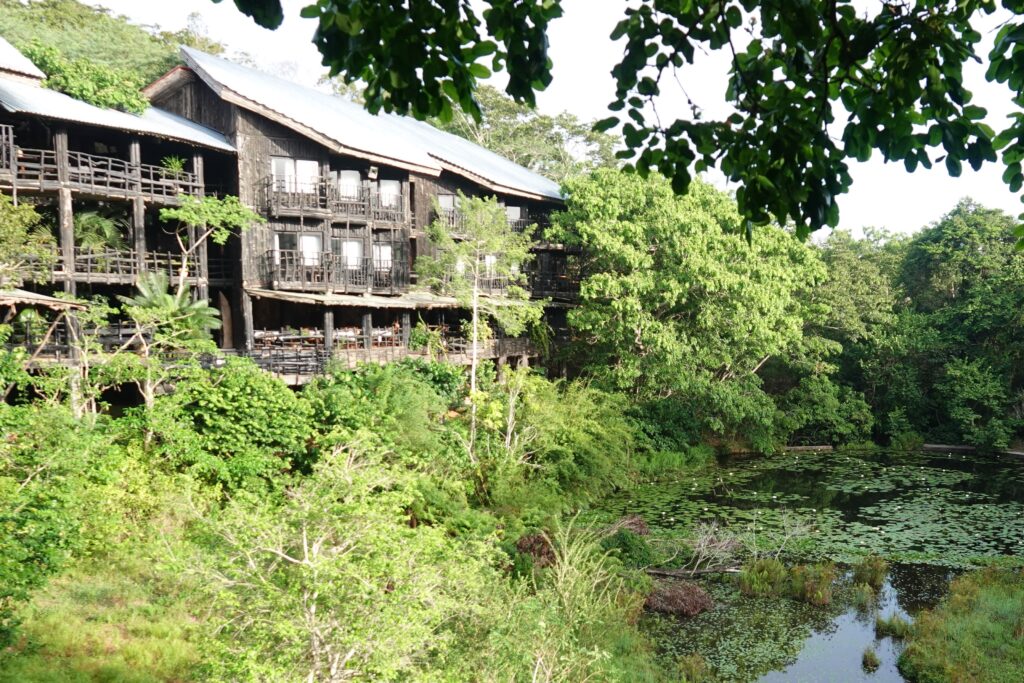
11 April
We were out scanning the forest from the lodge balcony at 6:00am in the hope of finding the local specialty, Fischer’s Turaco. This was soon spotted allowing us to take breakfast and set off for Arabuko-Sokoke Forest. We saw a number of birds on the drive. Among the more interesting were Blue-throated Brown Sunbird, Great Egret, Greater Painted-snipe, Green Wood Hoopoe, Grey-chinned Sunbird, Hamerkop, Northern Grey-headed Sparrow, Palm-nut Vulture, Purple Heron, Red-fronted Tinkerbird, Rufous Chatterer and Superb Sunbird.

The forest was very dry and quiet. We hoped that as the day cooled down bird activity would pick up, but that didn’t happen. After admiring the roosting African Wood Owl we drove to a distant part of the forest in the hope of finding a roosting Sokoke Scops Owl but were out of luck. Similarly there was no sign of the Sokoke Pipit. We did however see Amani Sunbird, Barn Swallow, Black-backed Puffback, Dark-backed Weaver, Emerald-spotted Wood Dove, Gorgeous Bushshrike, Green-backed Camaroptera, Lizard Buzzard, Mourning Collared Dove, Pale Batis, Spotted Flycatcher and Yellow-fronted Canary.
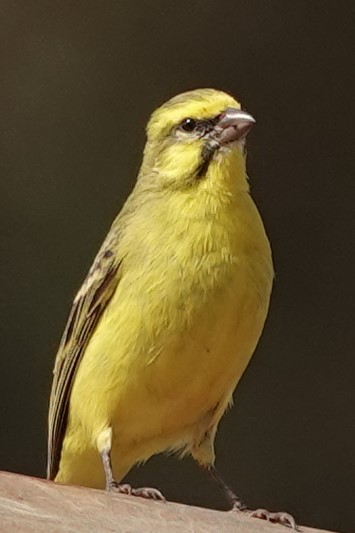
Departing the Forest at the required 6:00pm we arrived at our accommodation at Turtle Bay Beach Resort around 6:30 pm with storm clouds gathering but no rain. The resort is comfortable though touristic – all food and drink is pre-paid so the resort provides rather basic fare to balance the propensity for guests to eat too much!
12 April
We left the resort at 6:00am for another look at the forest. We had wonderful views of the Golden-rumped Elephant-shrew and got better views of the African Wood Owl.

We also found African Goshawk, African Pied Wagtail, African Pipit, Bearded Scrub Robin, Collared Sunbird, Common Scimitarbill, Forest Batis, Golden Palm Weaver, Grey-headed Kingfisher, Malindi Pipit at the dried up “swamp”, Mombasa Woodpecker, Narina Trogon, Pin-tailed Whydah, Red-eyed Dove, Red-tailed Ant Thrush, Tambourine Dove, Three-banded Plover, Willow Warbler and Yellow-bellied Greenbul.
We returned to the resort for lunch at 1:00pm and were picked up again at 3:00pm to go to the Sabaki River Mouth. Here we walked over the sand dunes to the river where there were a host of waders and other waterbirds. We admired them briefly before heading back to the riverside vegetation where there were a number of possible target species. We did find African Spoonbill, African Woolly-necked Stork, Coastal Cisticola, Northern Yellow White-eye, Red-cheeked Cordon-bleu, Spur-winged Lapwing, Village Indigobird, and Zanzibar Red Bishop. I heard Scaly Babbler but was unable to see it.
We departed the river mouth at 6:10pm and got to the resort at 7:05 where we had a very uninspiring buffet dinner.
13 April
Departing at 7:30 we drove the C103 road to Tsavo East National Park. The dusty open spaces of this park was a distinct contrast to the forests of the coastal areas we had been in. The morning was fine and clear but during the late afternoon a squall front came through whipping up a brief and dramatic dust storm that made driving impossible. After the wind front passed areas of heavy rain could be seen in the distance but did not impact us. We arrived at Voi Wildlife Lodge at 6:00pm. The lodge is set on the edge of a water hole which gives it a nice ambience.
A highlight of the drive through the park was a lioness chewing in the bones of a Giraffe that Francis estimated had ben killed three days before.

The drive to and through Tsavo East yielded a host of good birds. These included African Grey Hornbill, Bare-eyed Thrush, Black-chested Snake Eagle, Black-headed Lapwing, Black-throated Barbet, Brown-crowned Tchagra, Brubru, Buff-crested Bustard,

Chestnut Weaver, Chestnut-backed Sparrow-Lark, Chestnut-headed Sparrow-lark, Crowned Lapwing, D’Arnaud’s Barbet, Eastern Violet-backed Sunbird, Fischer’s Sparrow-lark, Fischer’s Starling, Foxy Lark, Gabar Goshawk,

Golden Pipit, Golden-breasted Starling, Green-winged Pytilia, Grey Wren-warbler, Grey-headed Bushshrike, Hadada Ibis, Hooded Vulture, Jacobin Cuckoo, Northern Carmine Bee-eater, Northern Red-billed Hornbill,
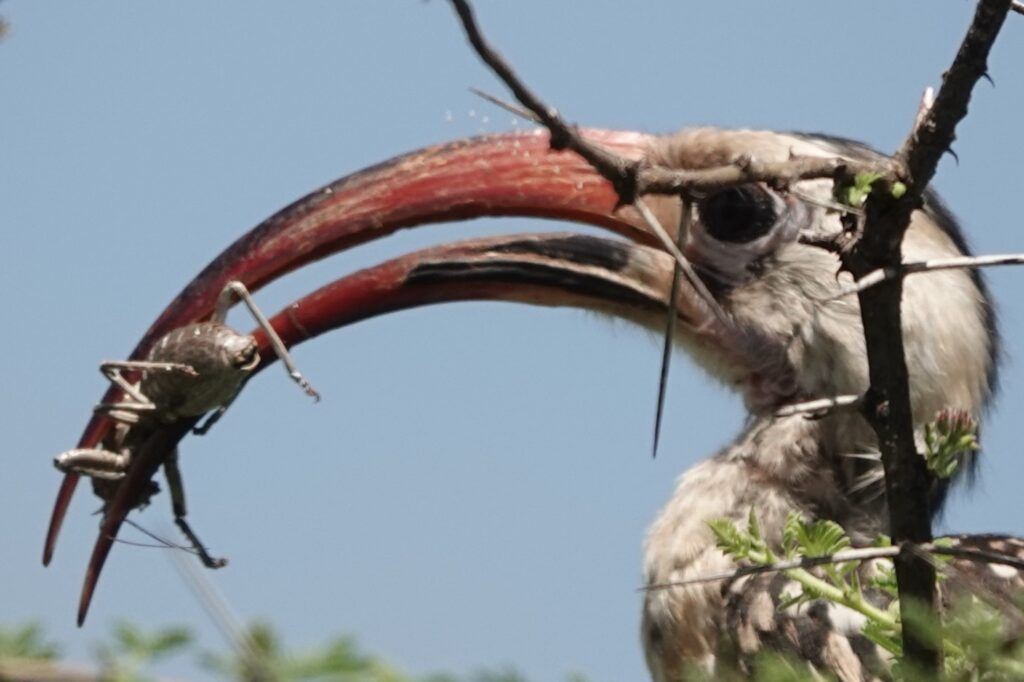
Northern White-crowned Shrike, Nubian Woodpecker, Pale Prinia, Pied Crow, Pink-breasted Lark, Pygmy Batis, Red-fronted Prinia, Red-winged Lark, Rosy-patched Bushshrike,

Slate-colored Boubou, Somali Bee-eater, Somali Courser, our only Somali Ostrich of the trip, Southern Ground Hornbill, Superb Starling, Taita Fiscal, Verreaux’s Eagle-owl, White-backed Vulture, White-browed Sparrow-weaver, White-headed Buffalo Weaver, Yellow-necked Spurfowl and Yellow-spotted Bush Sparrow.

Birding around Voi Wilderness Lodge revealed Eastern Golden Weaver and Lesser Masked Weaver.
14 and 15 April
We departed Tsavo East at 7:30 for the Taita Hills to look for a couple of Taita endemics. The road into the hills passes through richly developed agricultural hill country which has largely been denuded of its original forest.

At the far end of the road into the hills is a relatively small forest reserve where the endemics are usually found. We arrived at 9:00am having picked up local bird guide Nathanial and forest warden Johonom on the way. On reaching the forest we quite quickly located Taita Apalis and Taita White-eye but diligent searching failed to find the Thrush. We also saw Cabanis’s Greenbul, Joyful Greenbul, Spot-flanked Barbet and Stripe-faced Greenbul.
We departed Taita Hills forest at 11:00am and retraced our route to Voi. From there we drove on to the gate of Tsavo West National Park where we had our box lunch. Driving on through the park to Ngulia Lodge was a wonderful experience. The countryside is hilly with spectacular rock outcrops and lots of mammals and birds.

Ngulia Lodge, where we arrived at 5:30pm, is set on a spectacular saddle right in the middle of Tsavo West. The lodge is very comfortable and the food OK (better when a la carte than when a buffet).
Each evening meat is put out to attract Leopard. On both evenings we were at the lodge Leopard visited the bait, providing spectacular viewing.
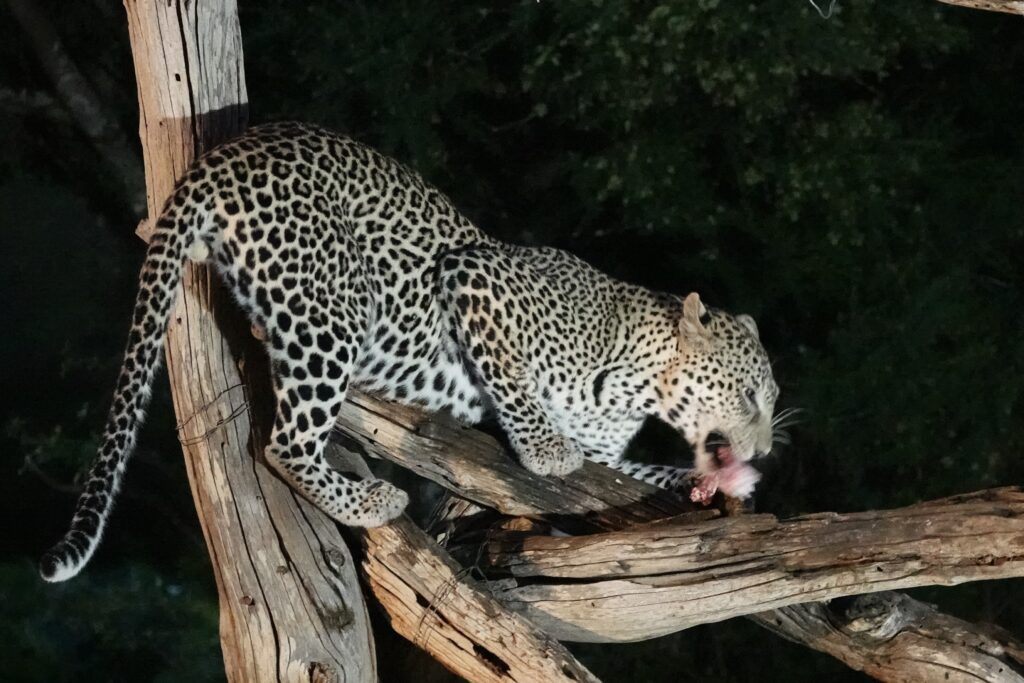
On 15 April we spent the morning cruising the Tsavo West park with lunch at the lodge. In the afternoon we visited the Rhino reserve which is fenced off from the rest of Tsavo West. Here we were rewarded with prolonged views of a Black Rhinoceros.

Birdlife within Tsavo West was quite prolific. Highlights included Bateleur, Augur Buzzard, Blue-naped Mousebird, Blue-cheeked Bee-eater, D’Arnaud’s Barbet, Northern Crombec, Red-faced Crombec, Hunter’s Sunbird, Tsavo Sunbird, Purple Grenadier, Blue-capped Cordon-bleu

Straw-tailed Whydah,
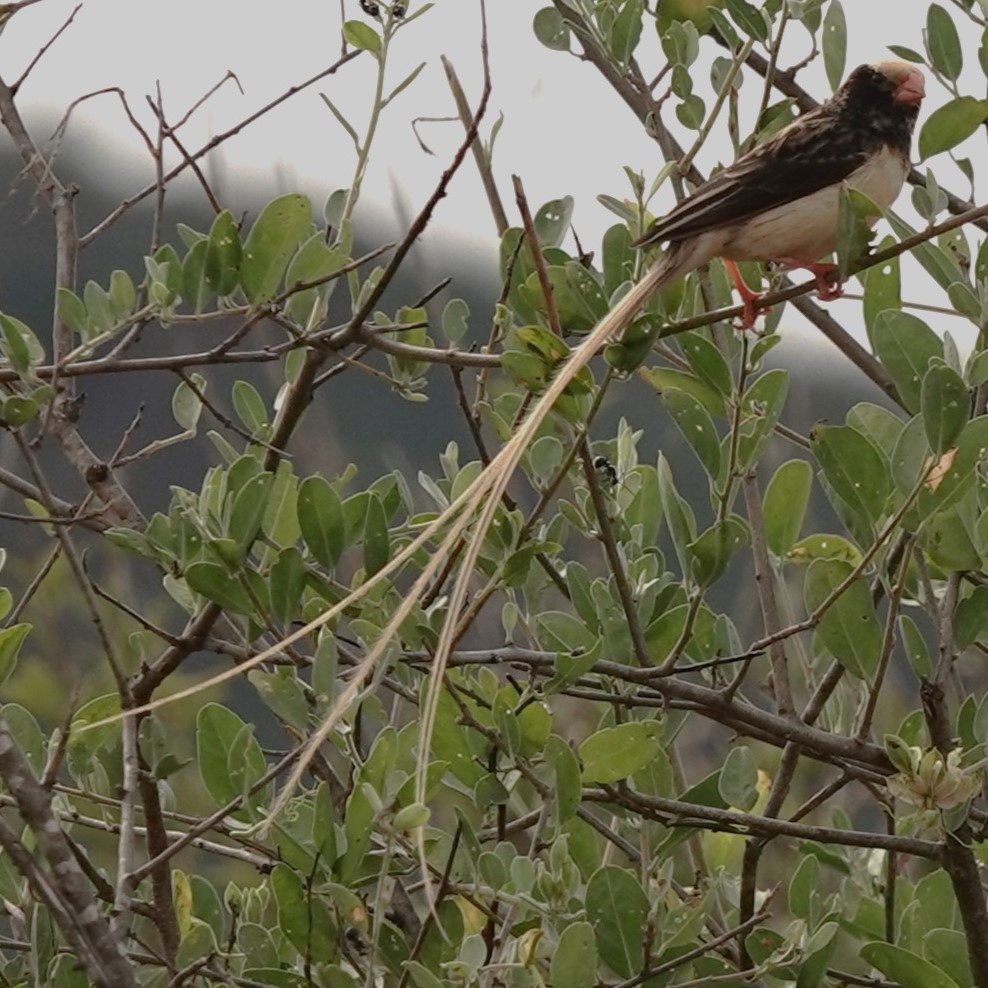
Hildebrandt’s Spurfowl, White-browed Coucal, Jacobin Cuckoo, Diederik Cuckoo, Lilac-breasted Roller, Red-and-yellow Barbet, Slate-colored Boubou, Acacia Tit, Ashy Cisticola Tawny-flanked Prinia, Yellow-breasted Apalis, Scaly Chatterer, Rüppell’s Starling, Hildebrandt’s Starling, Vitelline Masked Weaver,

Red-billed Quelea, Reichenow’s Seedeater, Klaas’s Cuckoo, Eastern Chanting Goshawk,
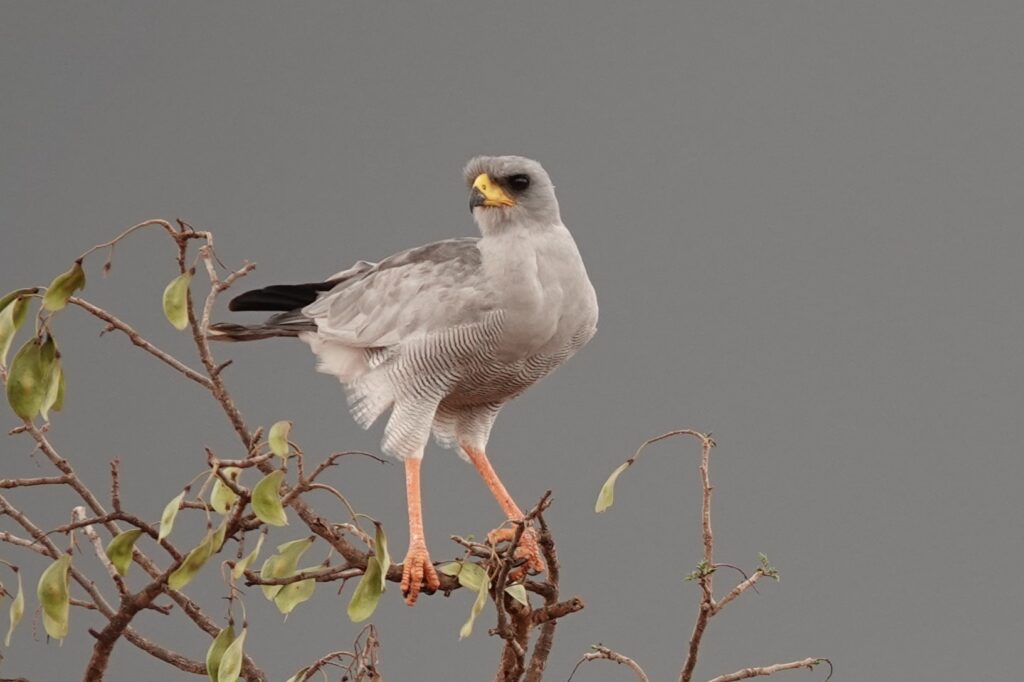
Von Der Decken’s Hornbill, a surprising Jackson’s Hornbill, Red-naped Bushshrike, Grey Wren-warbler, and Somali Bunting.
16 April
Departure from the lodge was at the now regular 7:00am for a morning drive through Tsavo West seeing many of the birds and mammals familiar from the past two days.

Driving to the park exit we noted Abyssinian Scimitarbill, Blue-cheeked Bee-eater, Blue-naped Mousebird, Common Ostrich, Lanner Falcon, Spotted Palm Thrush and Tsavo Sunbird. We drove out of the park at 11:10 and joined the truck choked highway (if a single lane road can be so called) to Nairobi. Birds were few and far between on this drive but we did see Marabou Stork, Western Cattle Egret, Hamerkop, Yellow-billed Kite and Pied Crow.
We drew into the Blue Post Hotel at Thika, near Nairobi, at 5:30pm. It is an older style property with unbelievably slow service of a sub-standard dinner but a pleasant garden.
17 April
An early morning walk in the hotel garden produced African Citril, Amethyst Sunbird, Baglafecht Weaver, Black-and-white Mannikin, the rare Grey-olive Greenbul, Rüppell’s Robin-chat, Speckled Mousebird and Steel-blue Whydah. After a limited breakfast we headed out at 8:15am, going first to a couple of sites that often have Hinde’s Babbler and then to Castle Forest lodge on the lower slopes of Mt Kenya.
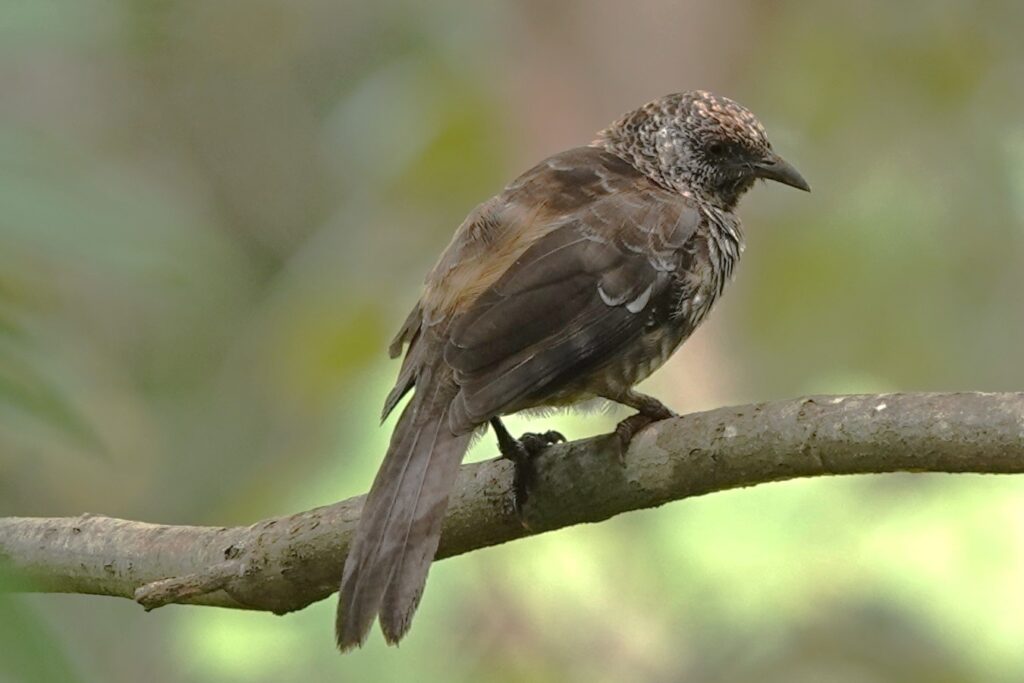
We saw the babbler at both sites and also found Abyssinian Thrush, Blue-headed Coucal, Bronzy Sunbird, Cape Robin-chat, Grey-capped Warbler, Hinde’s Babbler, Holub’s Golden Weaver,
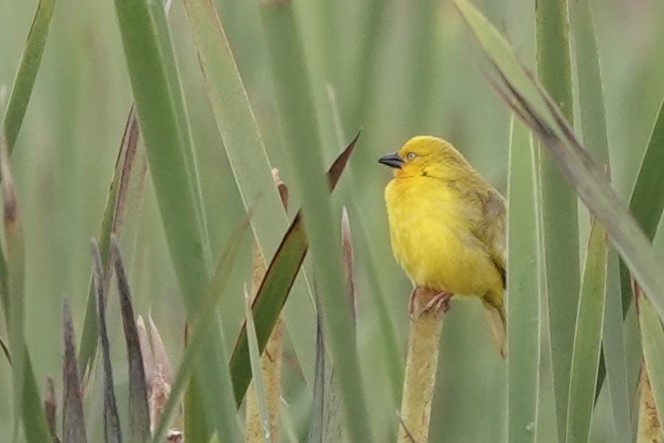
Singing Cisticola, Black-headed Oriole, Moustached Grass Warbler, Orange-breasted Bushshrike, Slender-billed Greenbul, Southern Black Flycatcher and Yellow Bishop.
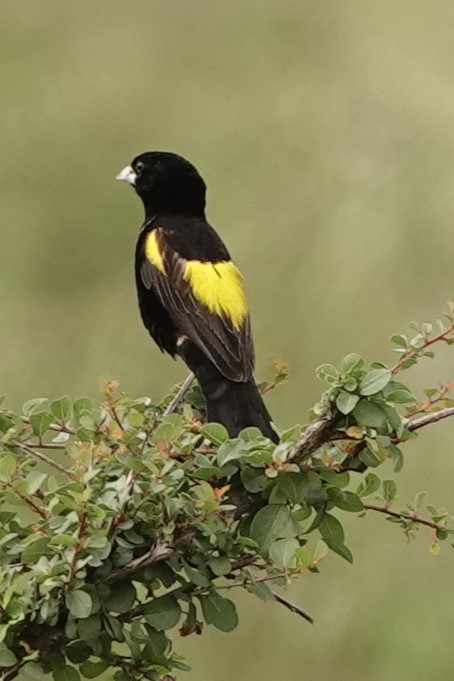
Walking up the 3 Kilometer entry road to Castle Forest Lodge brought yet more new trip birds as did a pleasant afternoon birding around the lodge. These included Black-fronted Bushshrike, Black-throated Apalis ,Eastern Double-collared Sunbird, Grey Apalis, Grey Cuckooshrike, Hartlaub’s Turaco, Kikuyu White-eye, Northern Double-collared Sunbird, Olive-breasted Greenbu,l Red-fronted Parrot, Scarce Swift, Silvery-cheeked Hornbill, Spectacled Weaver, Streaky Seedeater, Thick-billed Seedeater, Waller’s Starling, White-eyed Slaty Flycatcher, Yellow-bellied Waxbill and Yellow-whiskered Greenbul.
On our way to the dining room at around 6:30 Francis played the tape for the Montane Nightjar. The bird called back and then proceeded to fly around the grassland we were standing on 3 times providing good flight views.
Castle Forest Lodge is a delightful place. Very comfortable bungalows and a pleasant dining room serving excellent meals. It is set deeply into the forest with a wealth of birds.
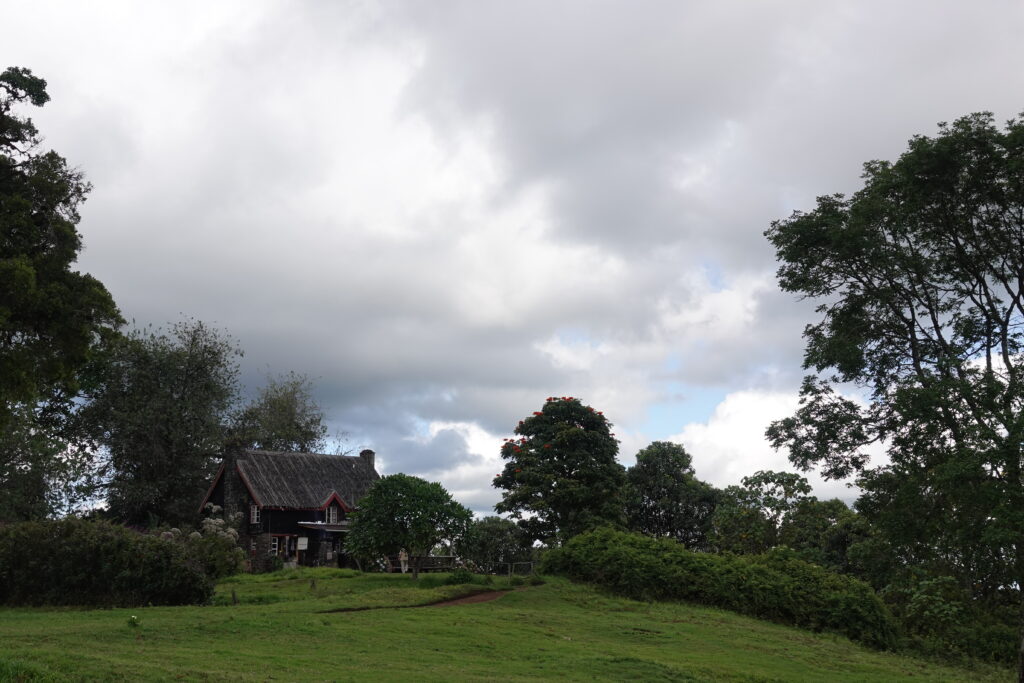
18 April
In the hope of seeing the much wanted Olive Ibis leaving its roosting tree we were out at 6:00am. Unfortunately while we heard 2 or 3 Ibis calling as they departed we could not see then. We had more luck with African Dusky Flycatcher, Brown Woodland Warbler, Common Whitethroat, Jackson’s Spurfowl, Tacazze Sunbird and Tropical Boubou before we headed off at 9:00am for Meru National park. It was a long slow drive to Meru in rain before we arrived at 4:30pm.
Rather than going straight to the Rhino River Camp we did a game drive in the park until 6:00pm. In addition to a host of mammals Meru produced some nice birds. A highlight was a small flock of Eastern Crested Guineafowl spotted by Francis moments before they vanished into a small gully. Other new trip birds were African Green Pigeon, Black-bellied Sunbird, Grey-the backed Fiscal, Helmeted Guineafowl, Lesser Honeyguide, Parrot-billed Sparrow, Striped Kingfisher and Violet-backed Starling.
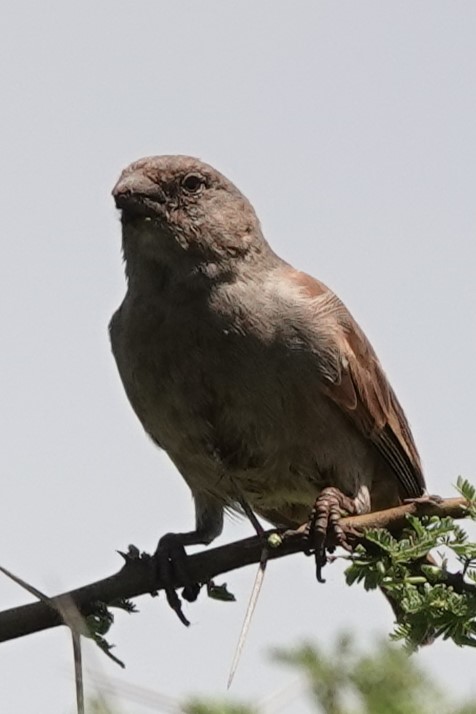
Rhino River Camp was more Glamp than Camp. Very large and comfortable tents provided the accommodation while a very pleasantly designed building provided eating and relaxing areas overlooking the pool. Food was among the best we had and the staff were most pleasant. The accommodation was completely unaffected by heavy rain we had overnight.
19 April
The day was spent doing two game drives within the Meru National park. The first from 7:00am to 12:45pm and the second from 3:00pm to 6:00pm. Fortunately the rain had stopped and we had fine weather all day.
New trip birds seen were Kori Bustard, Long-crested Eagle,

African Paradise Flycatcher, Northern Brownbul, Tiny Cisticola, Whinchat, Donaldson Smith’s Sparrow-weaver,

Thick-billed Weaver, Red-headed Weaver,

White-winged Widowbird, Bronze Mannikin, Crimson-rumped Waxbill, Quailfinch and Tree Pipit.
Mammals were plentiful. Those seen included Elephant, Plains Zebra, White rhinoceros, Giraffe, Impala, Waterbuck, African Buffalo, Red Tailed Monkey and Olive Baboon.
20 April
Leaving Meru National Park at 7:30am we drove to Buffalo Springs National Reserve. Rather than go straight to our Hotel we drove around into Buffalo Springs and had our lunch boxes beside the attractive swimming hole from which the reserve derives its name. The country is dry and open. New trip birds seen here were Vulturine Guineafowl
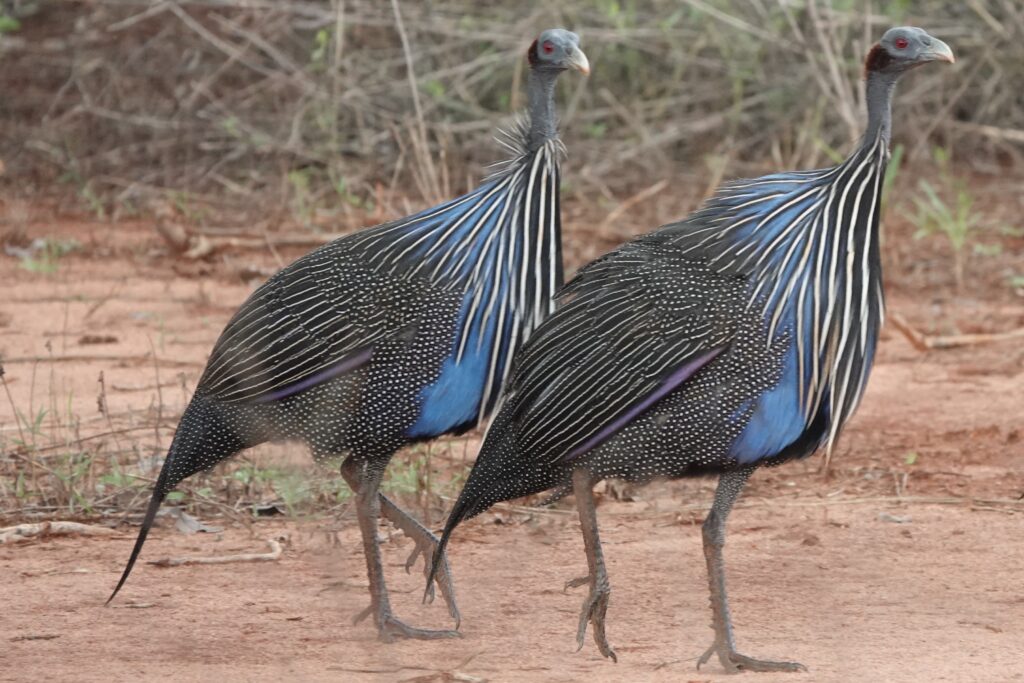
Chestnut-bellied Sandgrouse, Black-faced Sandgrouse,
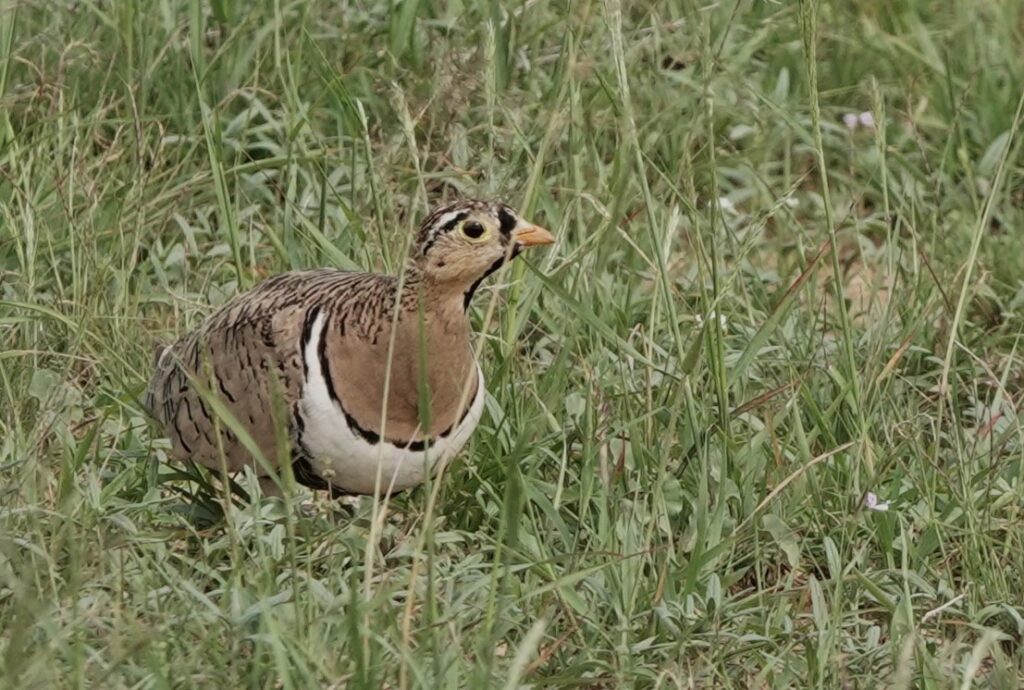
Grant’s Wood Hoopoe, Little Bee-eater, White-throated Bee-eater, Bearded Woodpecker, African Grey Woodpecker, Fischer’s Lovebird and Magpie Starling.
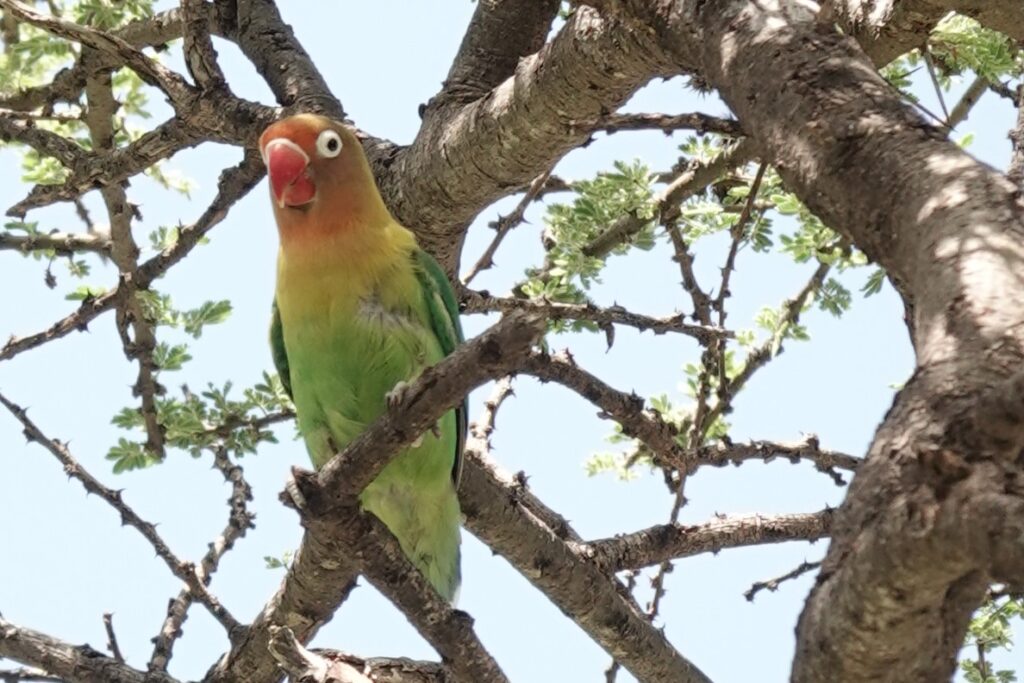
Our hotel for the next two nights was the fairly luxe Saroba Shaba within the Shaba National Reserve on the banks of the Uaso Nyiro River. We arrived at 5:30pm, after settling in and admiring the grounds we had a very fine buffet dinner ,
21 April
The next morning we picked up an armed ranger at 7:00 to accompany us through the Shaba National Reserve and out of the Eastern gate onto a volcanic cinder plain to look for the scarce Williams’s Lark. We were fortunate to not only find William’s Lark but in the same area we also found Masked Lark.

While driving in Shaba NR we also found Harlequin Quail, Lichtenstein’s Sandgrouse, Yellow-billed Stork, Fan-tailed Raven and Yellow-vented Eremomela.

Returning to the hotel by 11:30am gave time for a swim and a very nice light lunch before heading off for another drive through Buffalo Springs. New birds seen on this visit were Namaqua Dove, White-bellied Bustard, African Cuckoo, Three-banded Courser, Secretarybird,
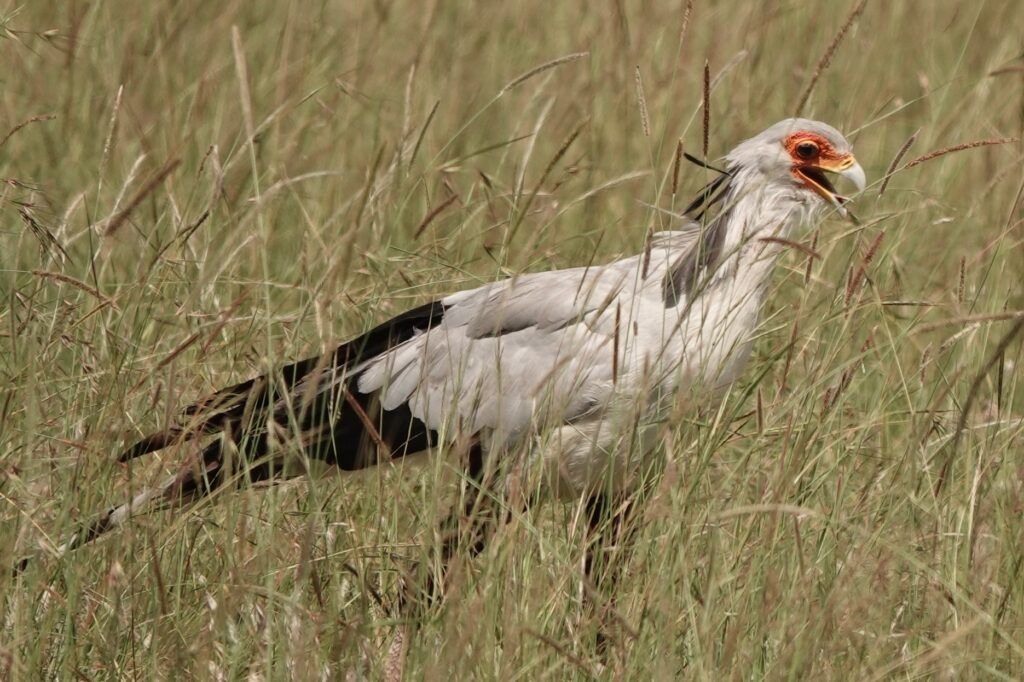
Pygmy Falcon, African Grey Flycatcher, African Silverbill, White-bellied Canary and Cinnamon-breasted Bunting.
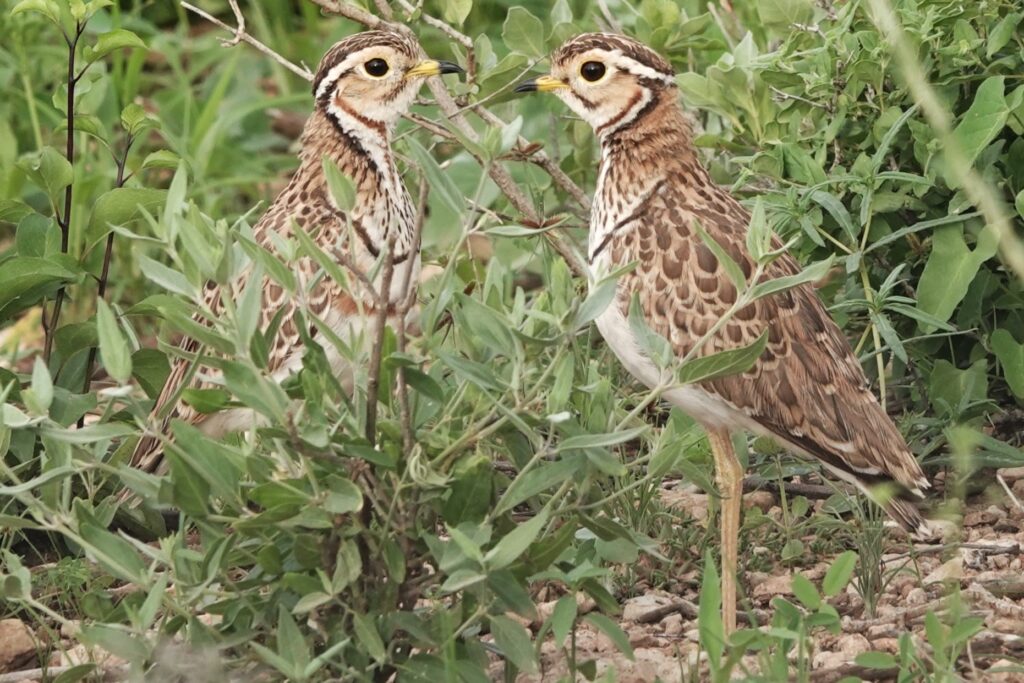
22 April
On a fine clear morning we set off at 7:00 for the long drive to the Aberdares National Park. Francis prepared us for a very restricted bird to be found right beside the road as we crossed the Equator. We pulled up and scanned the trees around the tourist shops but found nothing. Then, there it was, a Speke’s Weaver on top of a power pole! On this drive Northern Fiscal, Cape Crow, Anteater Chat, Kenya Sparrow, Long-tailed Widowbird and Jackson’s Widowbird were also seen.
Driving on we entered the Aberdares NP through the Rhino Gate, We soon found a nice spot to pull over and have our box lunch before climbing over the rugged hills of the Aberdares.

During a delightful afternoon of birding new trip birds were White-headed Wood Hoopoe, Mountain Yellow Warbler, Hunter’s Cisticola, Aberdare Cisticola,

Kenrick’s Starling, White-starred Robin, African Stonechat, Moorland Chat, Malachite Sunbird, Scarlet-tufted Sunbird, Golden-winged Sunbird and Abyssinian Crimsonwing.
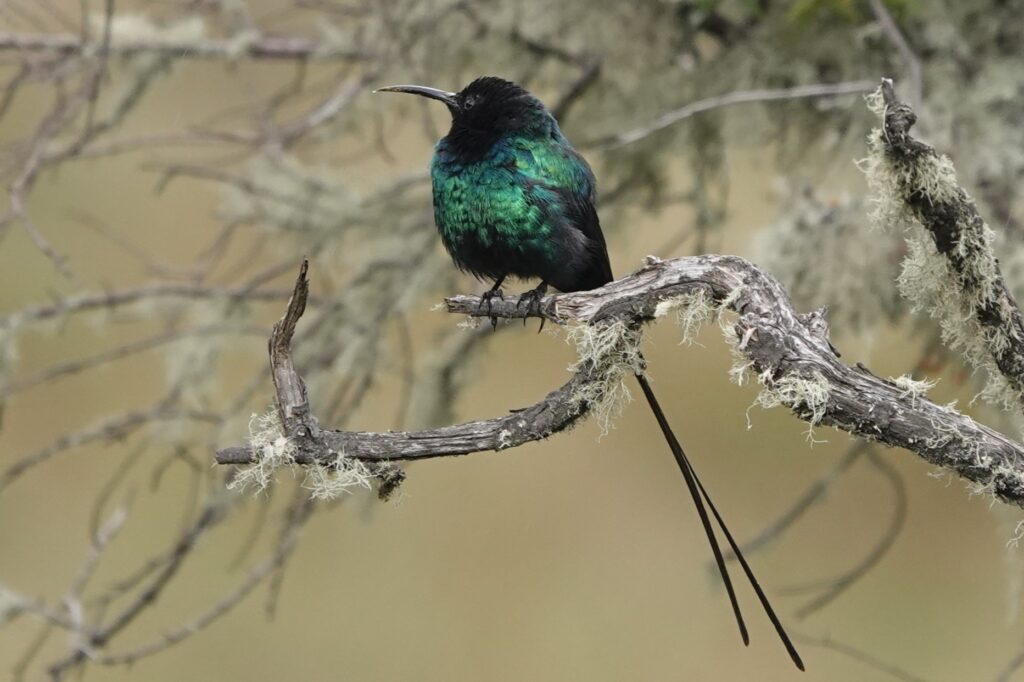
Cedar Retreat is another great accommodation provider with stylish accommodation and great food. The retreat is set deep in a cedar forest with a wallowing hole directly in front of the dining room.
23 April
Lake Elementaita was our destination today via the Kinangop Plateau. We left at 7:00am (having seen a Cinnamon Bracken Warbler in the grounds of the retreat) and arrived at the Kinangop Plateau at around 8:30am. There we met up with local guide Jack who is a very active member of a group helping to conserve the Sharpe’s Longclaw found only on this plateau. We saw a number of the Longclaw in flight as well as African Snipe, Black-winged Kite, Brown-throated Martin, Red-rumped Swallow, Levaillant’s Cisticola, Wing-snapping Cisticola, Common Waxbill, Cape Wagtail and Long-tailed Widowbird.

The Sarena Elementaita hotel would have to be the pick of all of the accommodation we experienced in Kenya. The accommodation and food were excellent and the position of the hotel, overlooking the lake festooned with Flamingo, was spectacular.

Arriving at 2:15pm we dropped our luggage in our luxurious “tent” and headed out at 3:00pm for a drive through the adjacent Soysambu Conservancy. Unfortunately it came on to rain quite heavily and we returned at 4:45pm having logged Black Cuckoo, Chinspot Batis,
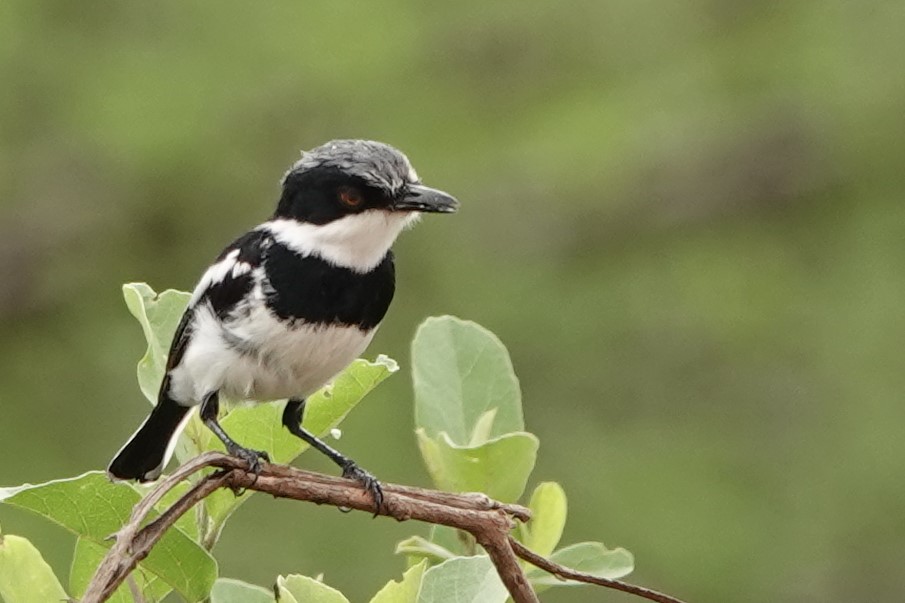
White-bellied Tit, Buff-bellied Warbler, Arrow-marked Babbler, Scarlet-chested Sunbird, Red-billed Firefinch and Golden-breasted Bunting.
24 April
A walk in the garden of the hotel started at 7:00am before a 7:30 breakfast. We did another short drive in the conservancy until 10:00am. New trip birds seen in the morning included Egyptian Goose, Lesser Flamingo, Black-winged Stilt, Common Ringed Plover, Little Stint, Grey-headed Gull, African Sacred Ibis, Great White Pelican, Greater Blue-eared Starling and Brimstone Canary.
Heading for Lake Baringo we noted a number of birds along the way. On arriving we met up with local guide Benson who showed us some local treats before we arrived at Tumbili Cliff Lodge at 6:00pm. New birds found on the road and at Lake Baringo were Red-chested Cuckoo, Greyish Eagle-owl, Northern White-faced Owl,

Spotted Eagle-Owl, Rock Martin, Bristle-crowned Starling, Silverbird, Brown-tailed Rock Chat, Beautiful Sunbird, Shining Sunbird, White-billed Buffalo Weaver and Little Weaver.
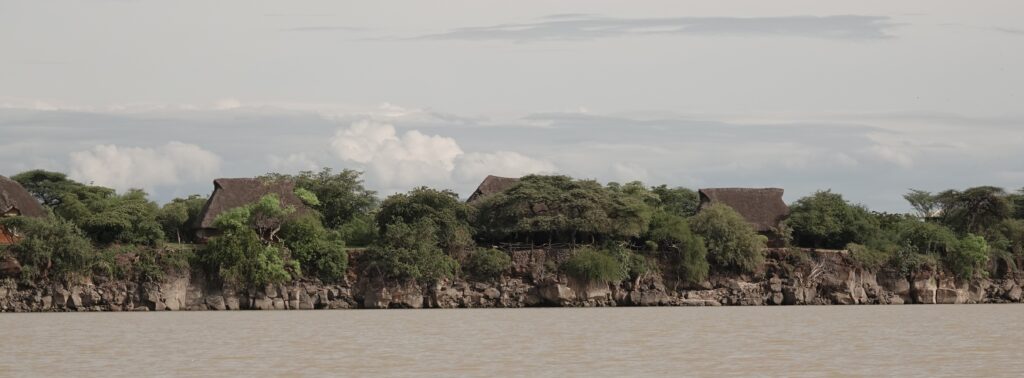
Tumbili Cliff lodge is sited at the top of a small cliff bordering on the lake. It was a most pleasant stay with intriguing architecture and delicious food. We were pleased to have a two night stay. Fortunately the grass roofs proved waterproof during a fierce overnight thunderstorm.
25 April
Tea and biscuits were provided at 6:00am before we boarded a boat for a cruise on Lake Baringo in calm fine conditions.

Our pre-breakfast list of new birds included African Swamphen, Black Crake, Grey Crowned Crane, Spotted Thick-knee, African Jacana, Wood Sandpiper, Common Greenshank, African Darter, Reed Cormorant, Striated Heron, Goliath Heron, Little Egret, Malachite Kingfisher, Pied Kingfisher, Northern Masked Weaver and Golden-backed Weaver.

Arriving back at 8:45am we had a relaxed breakfast before taking a drive to a drought stricken plateau above the lake. While we breakfasted Benson had been hard at work locating a Slender-tailed Nightjar.

Other new trip birds seen on the drive were Hemprich’s Hornbill, Woodland Kingfisher, Brown-tailed Apalis, White-browed Robin-chat and Grey-headed Silverbill.
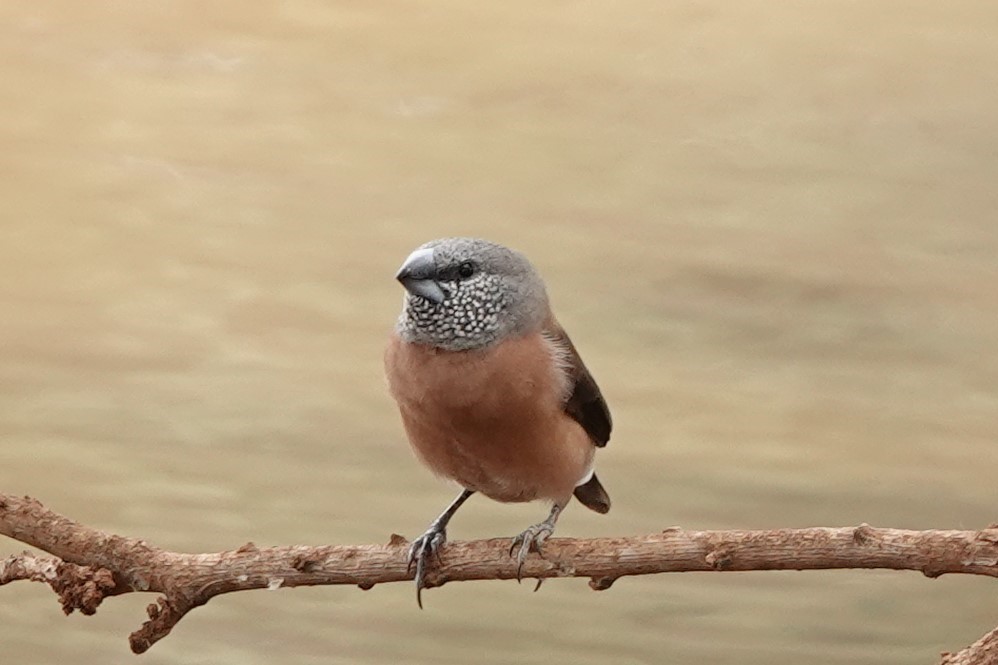
We had a free afternoon for the first time in the trip. Lake Baringo is Francis’s home town so we thought, in view of his excellent leadership, it was only fair for him to have a short break with his wife and family. We were also entitled to a rest as it was a public holiday in Australia for Anzac Day!
26 April
Heading off at 7:00am we birded again briefly along the cliff line behind the village of Lake Baringo and then drove to Kitale. These efforts produced White-crested Turaco, African Harrier-hawk, Mouse-colored Penduline Tit and Red-winged Starling. We arrived in Kitale at around 4:00pm and picked up our local guide Jeff. Rain brought our birding to a halt at around 5:30 having found Ross’s Turaco, Double-toothed Barbet, Chubb’s Cisticola,
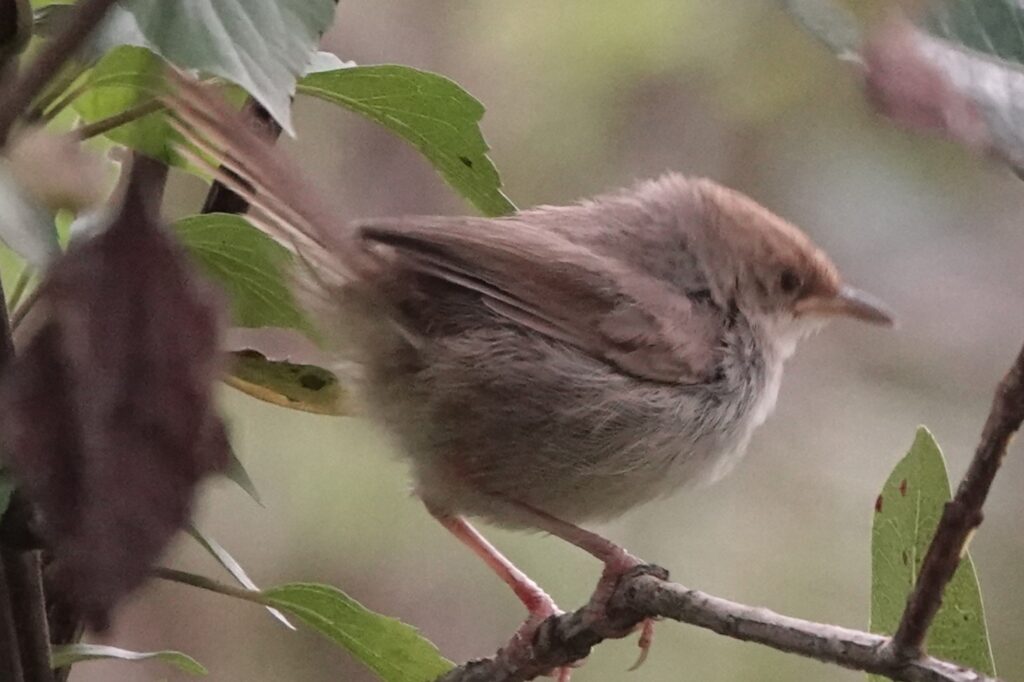
Brown Babbler African Thrush, Northern Black Flycatcher and Heuglin’s Masked Weaver.
The former farmhouse known as Barnley’s Guest House was our home for the next two nights.
27 April
We set off at 7:00am and picked up Jeff for a days local birding. We started off at a stream bordered with damp fields. The are was alive with birds. A Grey Crowned Crane roosting in a tree top provided wonderful photographic opportunities and the new camera obliged.
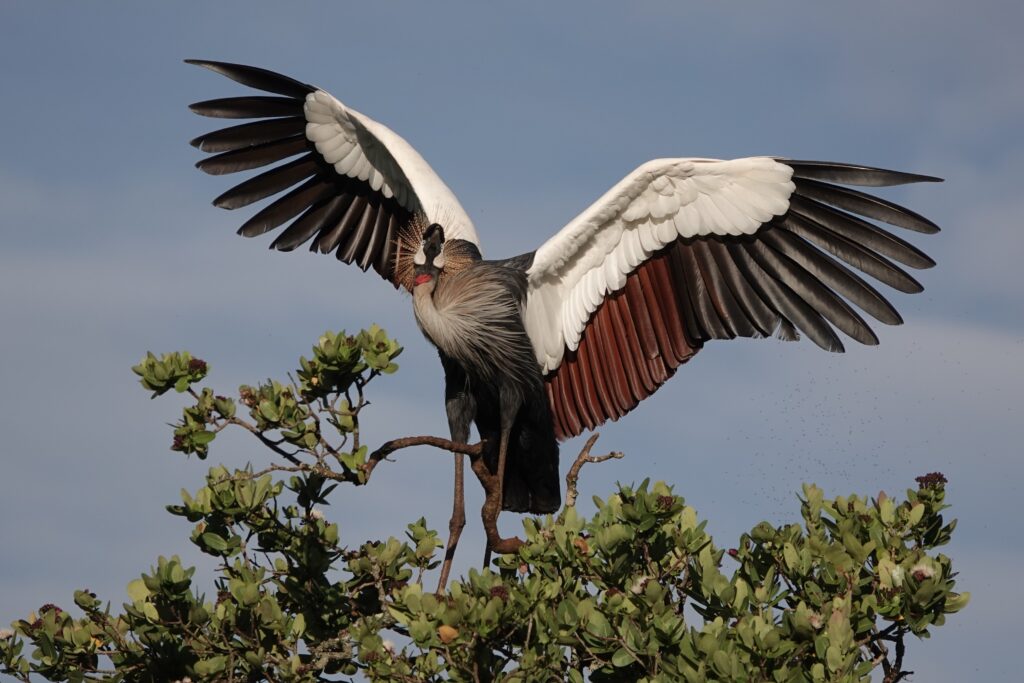
Also seen during the morning were (as new trip birds) Yellow-billed Duck, African Wattled Lapwing, Black Sparrowhawk, White-headed Barbet, African Yellow Warbler, Black-lored Babbler, Wattled Starling, Bronze-tailed Starling, Splendid Starling, Purple Starling, Shelley’s Sparrow, Fan-tailed Widowbird, Red-collared Widowbird, Yellow-throated Longclaw and Southern Citril.
Around the middle of the day we moved to an area known as Kanyarkwat on the Kongelai escarpment. This area was distinctly drier but agricultural use of the land has apparently grown significantly in recent years. The result of this has been a diminution of bird life, and particularly of the Foxy Cisticola which is found only in this small area. We spent five and a half hours scouring the few hectares of broken ground where this bird has been seen in recent years. The guides were so dedicated to finding the bird that I was concerned they would keep us there all night if need be1 I said to them that if we had not seen the bird by 4:30pm we were going – bird or no bird. With 5 minutes to spare Francis yelled that he had heard the call. We all rushed to where he was and Jeff got sight of the bird in a bush. To my relief the single bird un-characteristically hopped onto a branch and stayed there while I shot a few (unfortunately not well focussed) photos.

28 April
Regular as clockwork we set off at 7:30, this time for the famous Forest of Kakamega. This is a dense rain forest within which is nestled the lovely Rondo Retreat Centre with a cluster of well maintained cottages.

Arriving at the forest headquarters at 11:00am we met up with local guide Patrick and began birding the forest. The sky was very overcast and the light poor which made birding difficult. We paused for lunch and then continued until 5:30 by which time it was drizzling.
Despite the poor light we did see an array of wonderful birds new for the trip. Great Blue Turaco, Crowned Eagle, Grey-throated Barbet Yellow-spotted Barbet, Cassin’s Honeybird, Brown-throated Wattle-eye, Lühder’s Bushshrike, Mackinnon’s Shrike, African Blue Flycatcher, Dusky Tit, White-headed Saw-wing, Uganda Woodland Warbler, Stuhlmann’s Starling, Snowy-crowned Robin-chat, Green-headed Sunbird, Black-necked Weaver,

Grey-headed Nigrita, Blue-headed Bee-eater, Yellow-bellied Wattle-eye, Pink-footed Puffback, Western Oriole, Sharpe’s Drongo, Little Greenbul, Black-faced Rufous Warbler, Brown-chested Alethe and Equatorial Akalat were all seen.
29 April
Our day was spent birding the forest – Initially along the road through the forest passing the retreat and later along the paths surrounding the retreat. The light was considerably better that yesterday but for some reason the birds seemed harder to come by. New trip birds seen included Black-billed Turaco, White-spotted Flufftail, Petit’s Cuckooshrike, White-chinned Prinia, Vieillot’s Black Weaver, Red-headed Bluebill, Blue-spotted Wood Dove, Black-and-white-casqued Hornbill, Yellow-billed Barbet, African Broadbill, Jameson’s Wattle-eye, Bocage’s Bushshrike, African Shrike-flycatcher, Purple-throated Cuckooshrike, Red-tailed Bristlebill, Ansorge’s Greenbul, Angola Swallow, Black-collared Apalis, Turner’s Eremomela, Mountain Illadopsis, Scaly-breasted Illadopsis and Red-headed Malimbe.
30 April
After heavy overnight rain we birded the garden of the retreat and its surrounding paths in light drizzle. Black-faced Prinia was the only new trip bird we saw in a very quiet session.
At 10:30am we set out in the general direction of Busia on the Uganda border. We got to the Sio River bridge around lunchtime. Due to some sort of misunderstanding our intended local guide did not eventuate. Francis did a great job in the circumstances getting us to some suitable riverine habitat downstream of the bridge. The owner of the property agreed to our birding his land and we began to pick up interesting species until it started to rain which curtailed the birding. We did however see Piapiac, Wire-tailed Swallow, Winding Cisticola, Swamp Flycatcher, Red-chested Sunbird, Copper Sunbird and Papyrus Canary.
We stayed at Hunter’s Cottages which was a strange establishment. The infrastructure was a modern multi-story hotel with minimal, but well organised, grounds. The service and food were disappointing however. It was odd to have our bags scanned entering the hotel as though we were boarding an overseas flight!
1 May
We drove straight to Kisumu in the morning, departing at 6:30am and arriving at 8:30 on the shores of lake Victoria. Local guides Morris and Tom took us for a 2.5 hour boat ride on the lake allowing us to pick up a number of papyrus inhabiting species. These included Eastern Plantain-eater, Water Thick-knee, Little Bittern, Black Kite Black-headed Gonolek, Greater Swamp Warbler, Lesser Swamp Warbler, White-winged Swamp Warbler, Carruthers’s Cisticola,
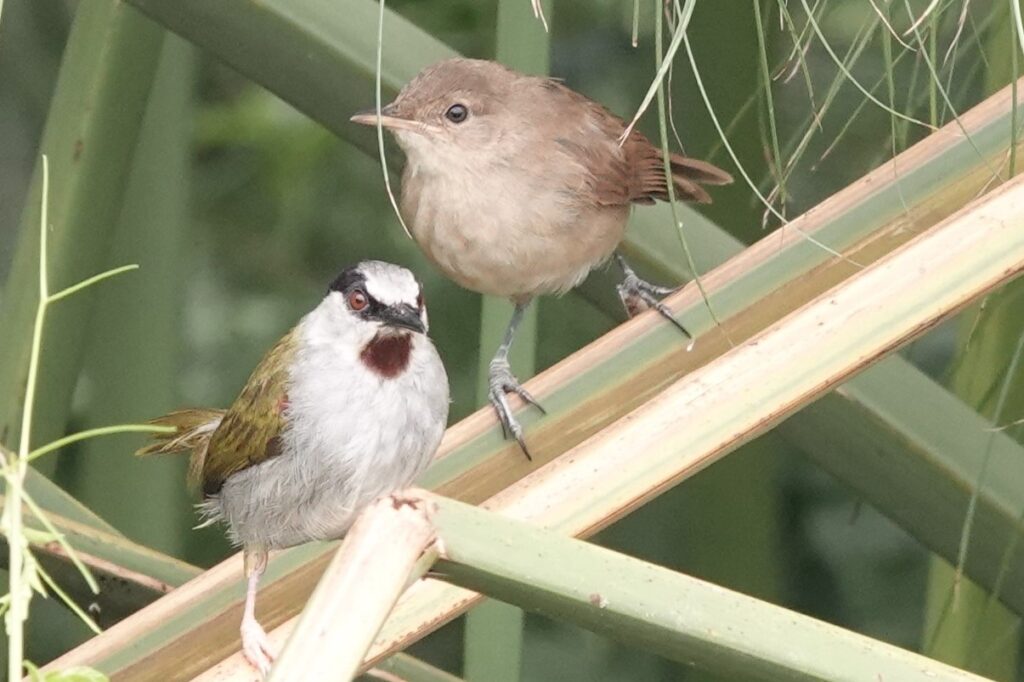
Slender-billed Weaver and Northern Brown-throated Weaver. in anticipation of a very early start the next morning we retreated to our down town hotel, Sarova Imperial, relatively early and relaxed.
2, 3 and 4 May
A political demonstration was scheduled to take place in Kisumu today. In order to ensure we were not caught in what was predicted to be a violent demonstration Francis arranged for us to leave the hotel at 5:00am. The drive to Maasai Mara was further complicated by flooding of some of the roads on the shortest route. As it turned out the trip was totally uneventful but very long.
We spent 2 nights at the very smart Sarena Mara hotel. The design of the hotel takes good advantage of the elevated site with wonderful views over the undulating grasslands of the Maasai Mara.
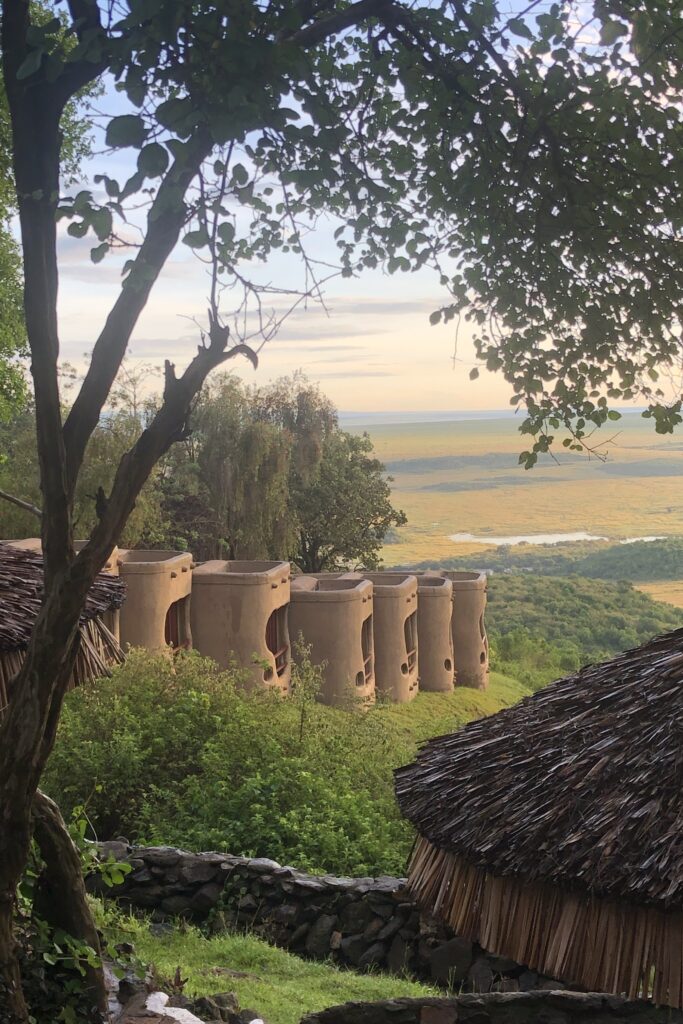
On 4 May we transferred to the Eastern side of Maasai Mara and stayed one night at the much smaller and more intimate lodge Osero Camp Mara which was also of a high standard.
We did a number of drives around the Mara Triangle during our 2 days at the Sarena Mara and then crossed right across the reserve to the Osero Camp. The scenery was stunning with the wide sweeps of open grassland clothed in metre high grass rippling in the breeze. The hills on either side of the rift valley providing a rugged backdrop.

By contrast the valley leading from the village of Sekenanin up to the Osero Camp was quite forrested and the abundant bird life there was remarkable.
We saw a host of new trip birds during these drives including Red-necked Spurfowl, Black-bellied Bustard,
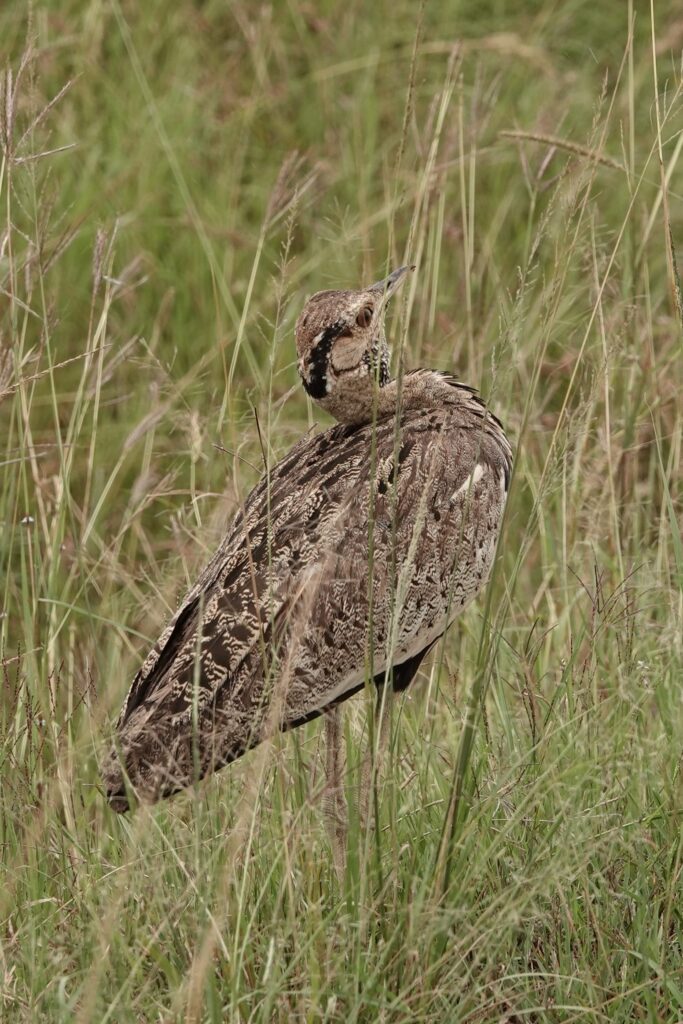
Speckled Pigeon, Lappet-faced Vulture, African Hoopoe, Usambiro Barbet, Long-tailed Cisticola, Black-backed Cisticola, Pectoral-patch Cisticola, Sooty Chat,

Swahili Sparrow, Grey-capped Social Weaver, Speckle-fronted Weaver ,Yellow-mantled Widowbird, Rosy-throated Longclaw,

White-faced Whistling Duck, Red-winged Francolin,
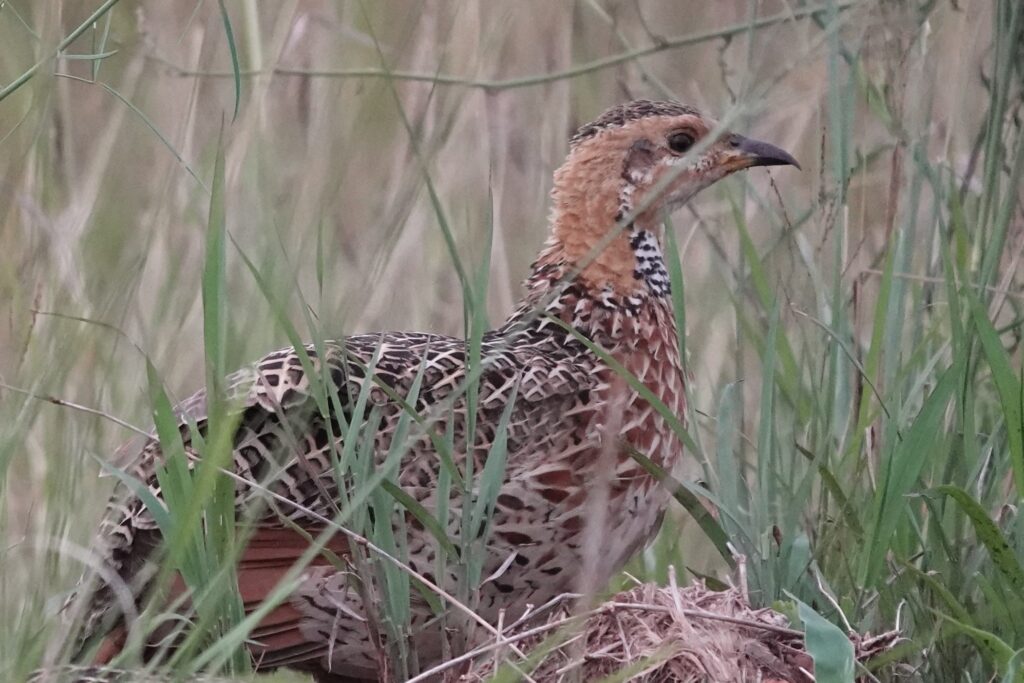
Black Coucal, Blacksmith Lapwing, Senegal Lapwing, Temminck’s Courser, African Openbill, Rufous-bellied Heron, Lesser Kestrel, Grey Kestrel, Red-capped Lark, Fan-tailed Grassbird, Stout Cisticola, Croaking Cisticola, Red-cowled Widowbird, Long-tailed Paradise Whydah, Cuckoo-finch, Plain-backed Pipit, African Scops Owl, Grey-crested Helmetshrike, Banded Martin, Marico Sunbird, Rufous-tailed Weaver, Cardinal Quelea, Bare-faced Go-away-bird, Ring-necked Dove Greater Honeyguide, Red-throated Tit and Yellow-bellied Eremomela.
We had a surprising experience one morning in the Mara Triangle. We stopped the vehicle to have a close look at a Terrapin ambling across the road. It stopped in a culvert beside the road only a couple of meters from us.

While watching the Terrapin we noticed a pair of Southern Ground Hornbill 200m away and working their way across the lightly shrubbed grassland in our direction.
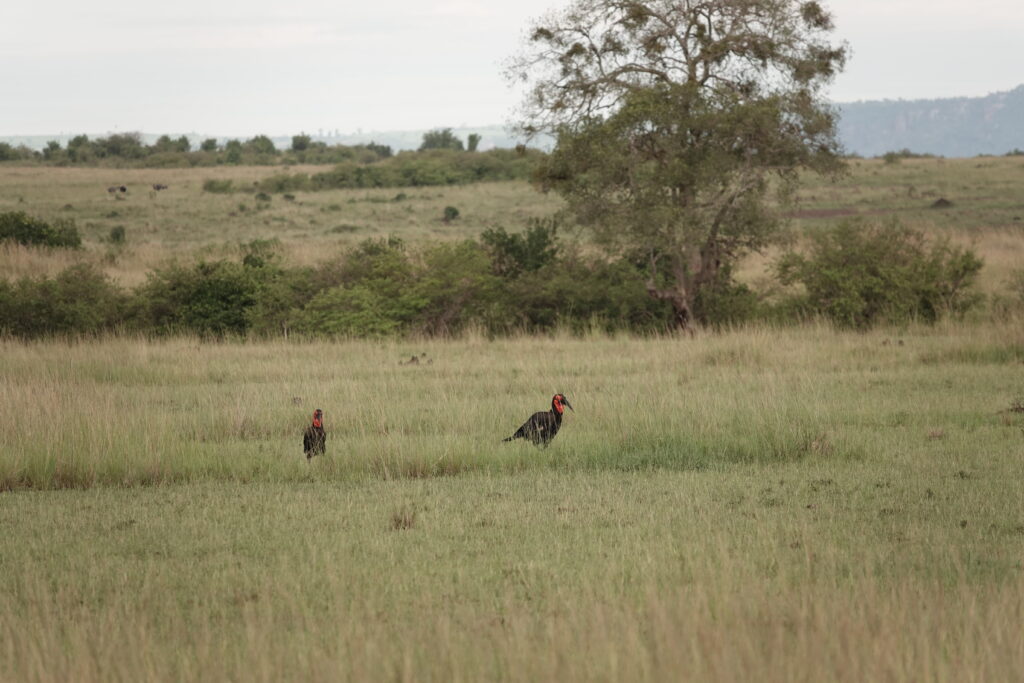
They got within 50 m of us when the leading bird came quite purposefully towards us across the grass. I wondered what could have triggered this behaviour. The bird walked directly up to the Terrapin and flipped it onto its back. The reptile responsively drew in its head and legs but was otherwise defenceless. The bird managed to get a hold of the Terrapin’s shell and drag it out of the culvert onto level ground where it proceeded to viciously stab its massive beak onto the ends of the retracted limbs of the reptile over and over again. After much work the Hornbill began to pull flesh out of the Terrapin’s shell through the limb apertures.
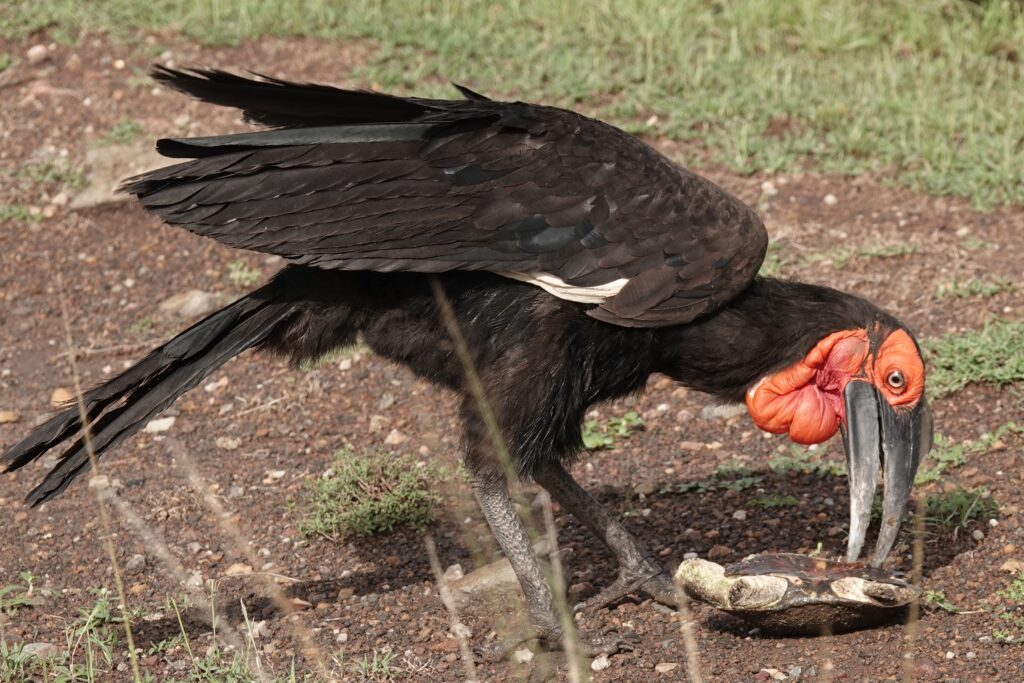
The second Hornbill waited patiently until the Terrapin’s limbs appeared to go limp and protrude from the shell, It then joined the feast.
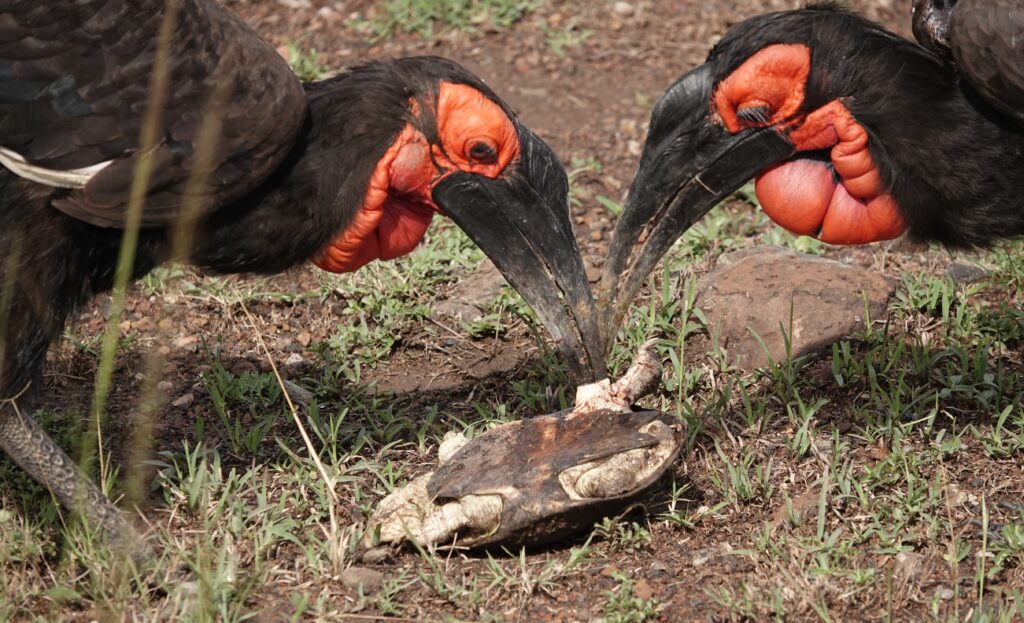
I had no idea that the Hornbill would be able to hunt and kill a Terrapin. A dramatic illustration of the food chain in operation!
5 May
We birded from Osero Camp back too Sekanine and enjoyed a fabulous last few hours of Kenya birding. Once out of the park we drove straight to Nairobe and mid afternoon were dropped off at our hotel and said a very special thank you to Francis and Martin.
New life birds seen on this trip were :-
• Eastern Crested Guineafowl (Guttera pucherani)
• Coqui Francolin (Campocolinus coqui)
• Red-winged Francolin (Scleroptila levaillantii)

• Jackson’s Spurfowl (Pternistis jacksoni)
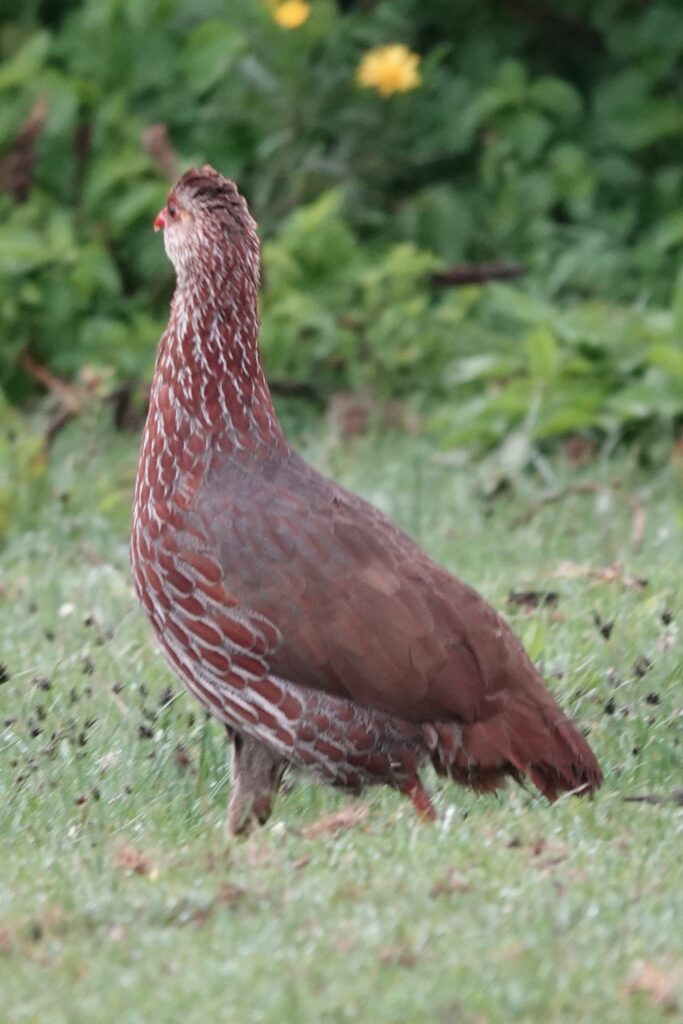
• Hildebrandt’s Spurfowl (Pternistis hildebrandti)
• Montane Nightjar (Caprimulgus poliocephalus)
• Scarce Swift (Schoutedenapus myoptilus)
• African Black Swift (Apus barbatus)
• Black-billed Turaco (Tauraco schuettii)
• Fischer’s Turaco (Tauraco fischeri)
• Hartlaub’s Turaco (Tauraco hartlaubi)
• Black-bellied Bustard (Lissotis melanogaster)
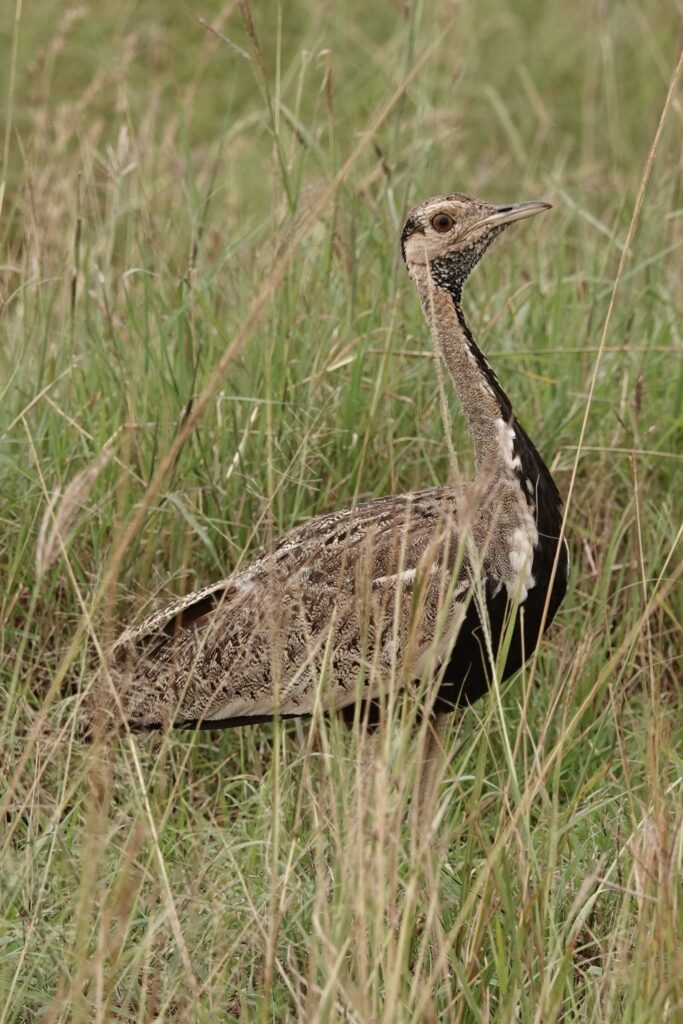
Fischer’s Lovebird (Agapornis fischeri)
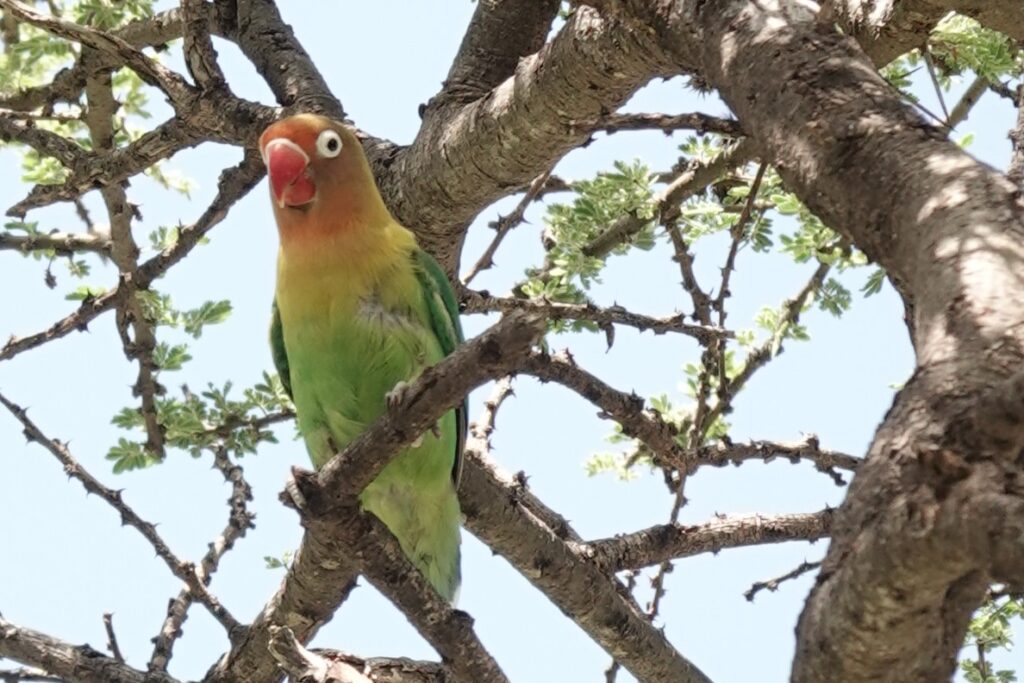
• Forest Batis (Batis mixta)
• Pale Batis (Batis soror)
• Jameson’s Wattle-eye (Platysteira jamesoni)
• Black-fronted Bushshrike (Chlorophoneus nigrifrons)
• Three-streaked Tchagra (Tchagra jamesi)
• Grey-crested Helmetshrike (Prionops poliolophus)
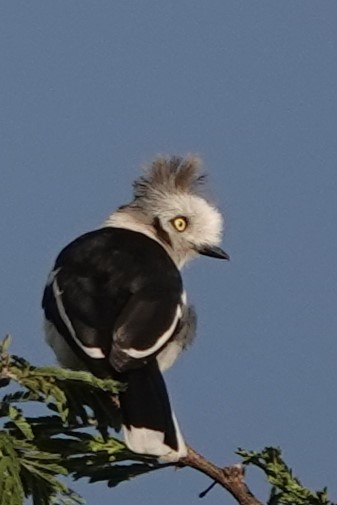
• Chestnut-fronted Helmetshrike (Prionops scopifrons)
• Long-tailed Fiscal (Lanius cabanisi)
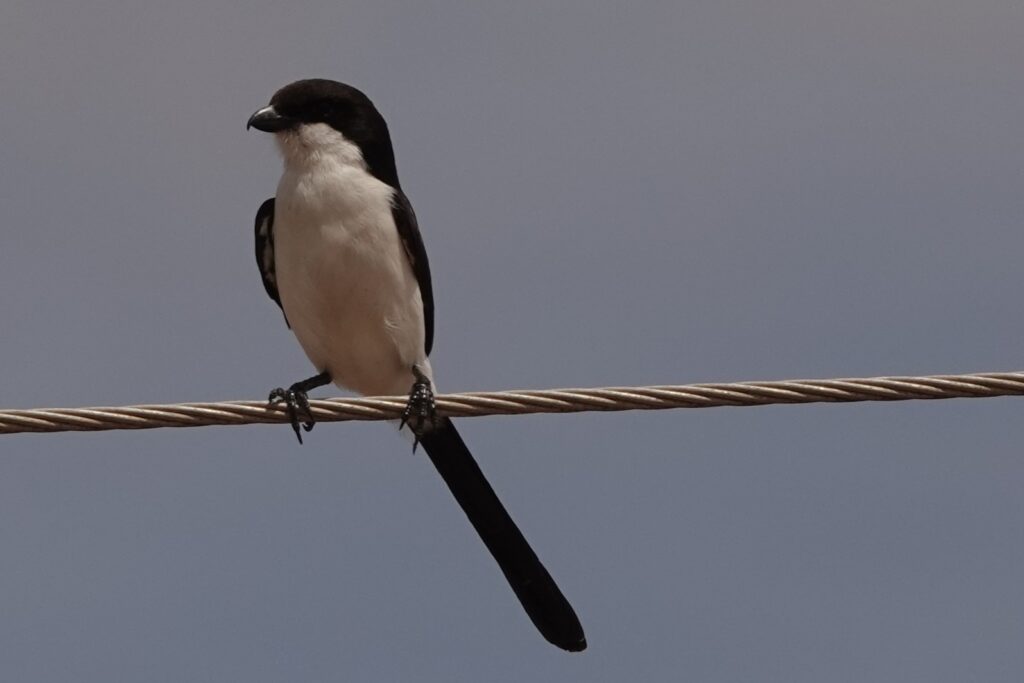
• Taita Fiscal (Lanius dorsalis)
• Red-throated Tit (Melaniparus fringillinus)
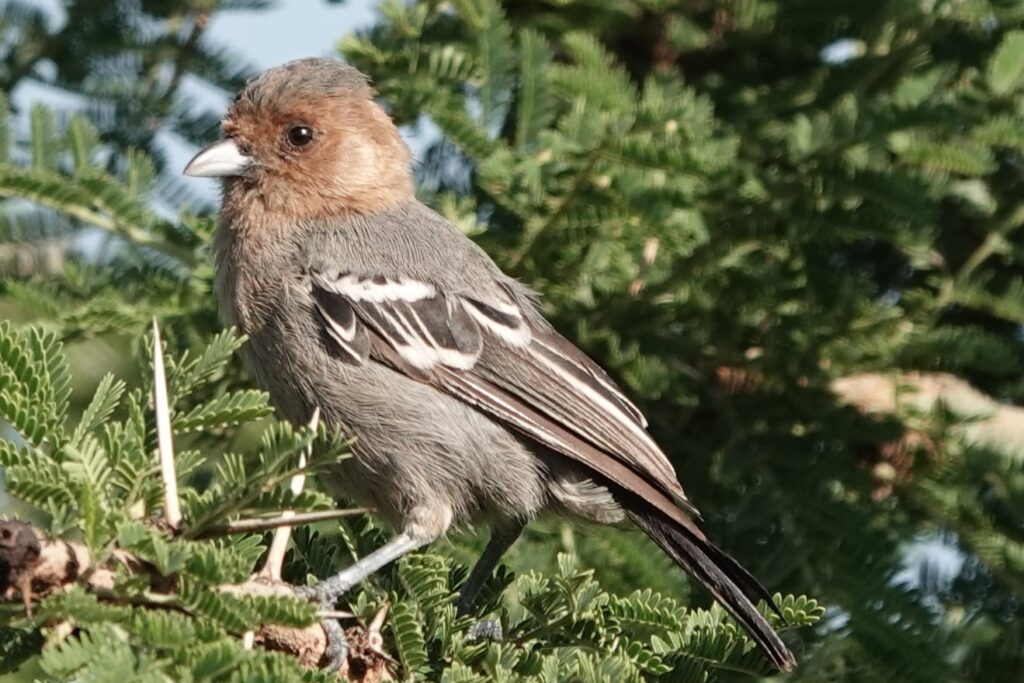
• Eastern Nicator (Nicator gularis)
• Fischer’s Sparrow-lark (Eremopterix leucopareia)
• Pink-breasted Lark (Calendulauda poecilosterna)
• Red-winged Lark (Mirafra hypermetra)
• Rufous-naped Lark (Mirafra africana)
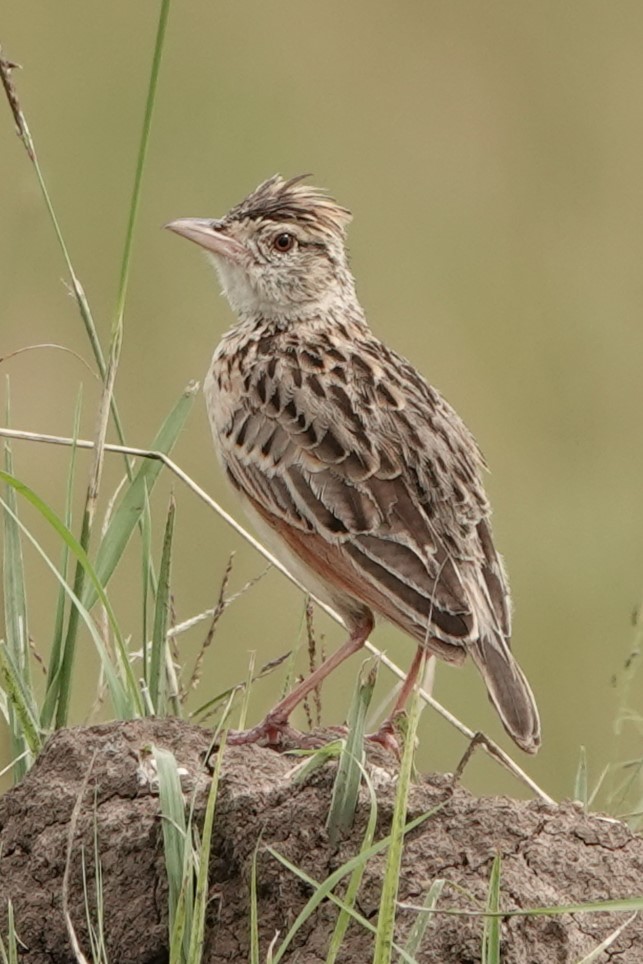
• Williams’s Lark (Mirafra williamsi)
• Masked Lark (Spizocorys personata)

• Joyful Greenbul (Chlorocichla laetissima)

• Olive-breasted Greenbul (Arizelocichla kikuyuensis)
• Stripe-faced Greenbul (Arizelocichla striifacies)
• Ansorge’s Greenbul (Eurillas ansorgei)
• Grey-olive Greenbul (Phyllastrephus cerviniventris)
• Little Yellow Flycatcher (Erythrocercus holochlorus)
• Uganda Woodland Warbler (Phylloscopus budongoensis)
• Mountain Yellow Warbler (Iduna similis)
• White-winged Swamp Warbler (Bradypterus carpalis)
• Hunter’s Cisticola (Cisticola hunteri)
• Ashy Cisticola (Cisticola cinereolus)
• Coastal Cisticola (Cisticola haematocephalus)
• Carruthers’s Cisticola (Cisticola carruthersi)
• Aberdare Cisticola (Cisticola aberdare)
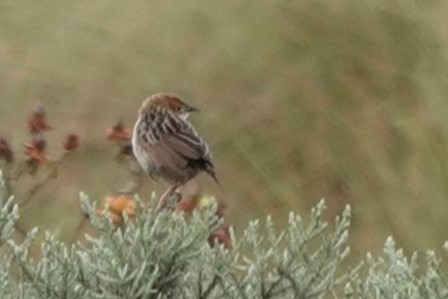
• Foxy Cisticola (Cisticola troglodytes)

• Long-tailed Cisticola (Cisticola angusticauda)
• Black-backed Cisticola (Cisticola eximius)
• Wing-snapping Cisticola (Cisticola ayresii)
• Black-faced Prinia (Prinia melanops)
• Taita Apalis (Apalis fuscigularis)
• Black-headed Apalis (Apalis melanocephala)
• Grey-capped Warbler (Eminia lepida)

• Green-backed Camaroptera (Camaroptera brachyura)
• Yellow-vented Eremomela (Eremomela flavicrissalis)
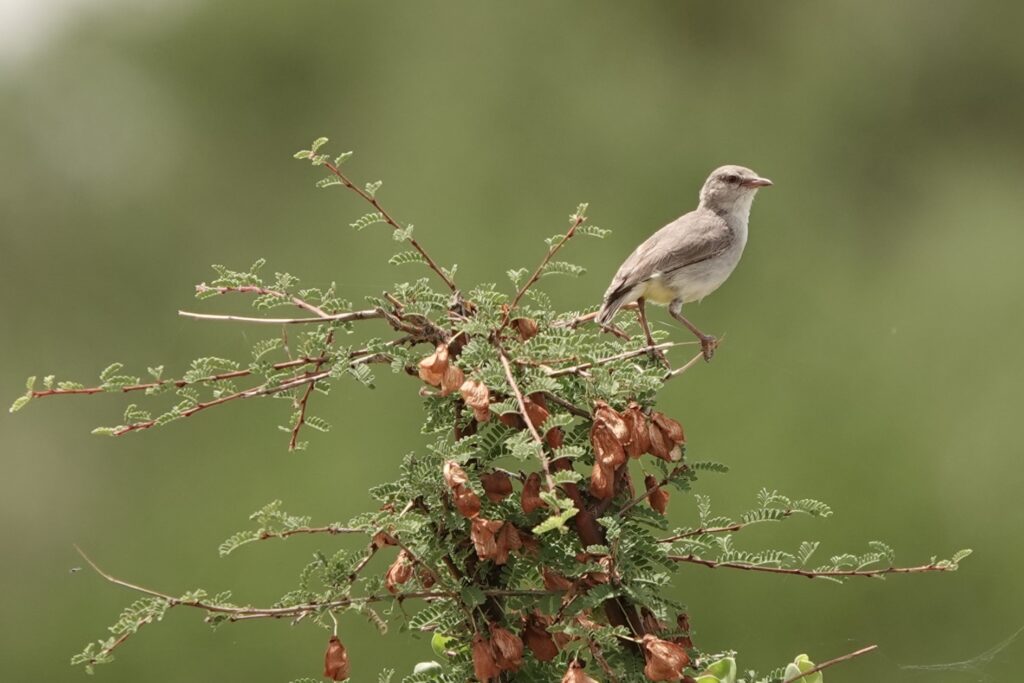
• Turner’s Eremomela (Eremomela turneri)
• Kikuyu White-eye (Zosterops kikuyuensis)
• Taita White-eye (Zosterops silvanus)
• Mountain Illadopsis (Illadopsis pyrrhoptera)
• Scaly-breasted Illadopsis (Illadopsis albipectus)
• Scaly Chatterer (Argya aylmeri)
• Hinde’s Babbler (Turdoides hindei)
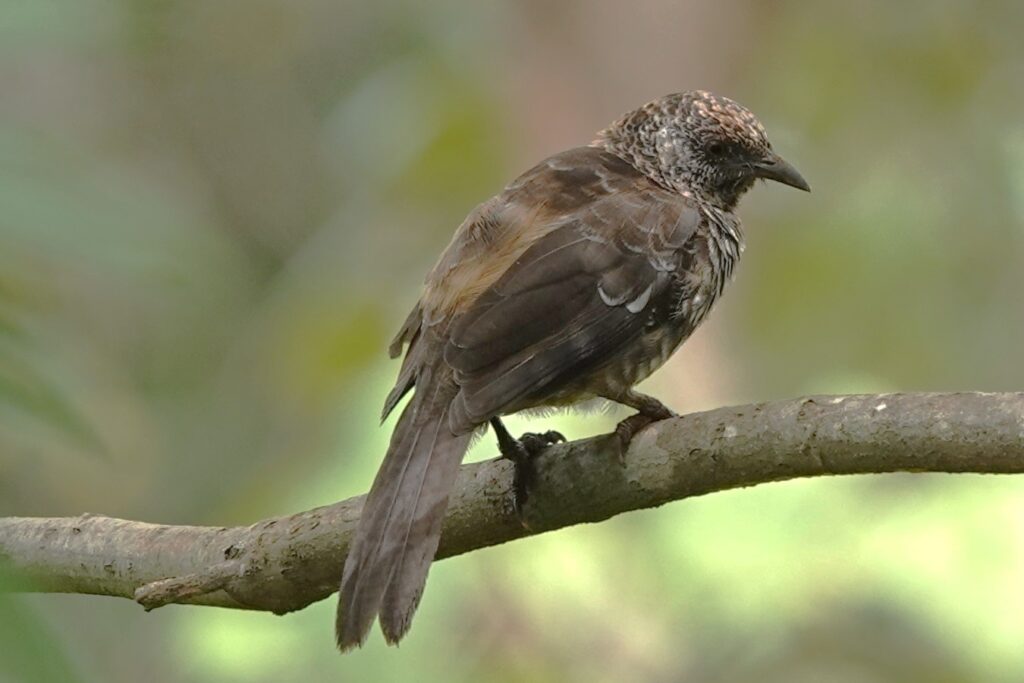
• Black-bellied Starling (Notopholia corusca)
• Hildebrandt’s Starling (Lamprotornis hildebrandti)
• Fischer’s Starling (Lamprotornis fischeri)
• Kenrick’s Starling (Poeoptera kenricki)
• Red-tailed Ant Thrush (Neocossyphus rufus)
• Silverbird (Empidornis semipartitus)
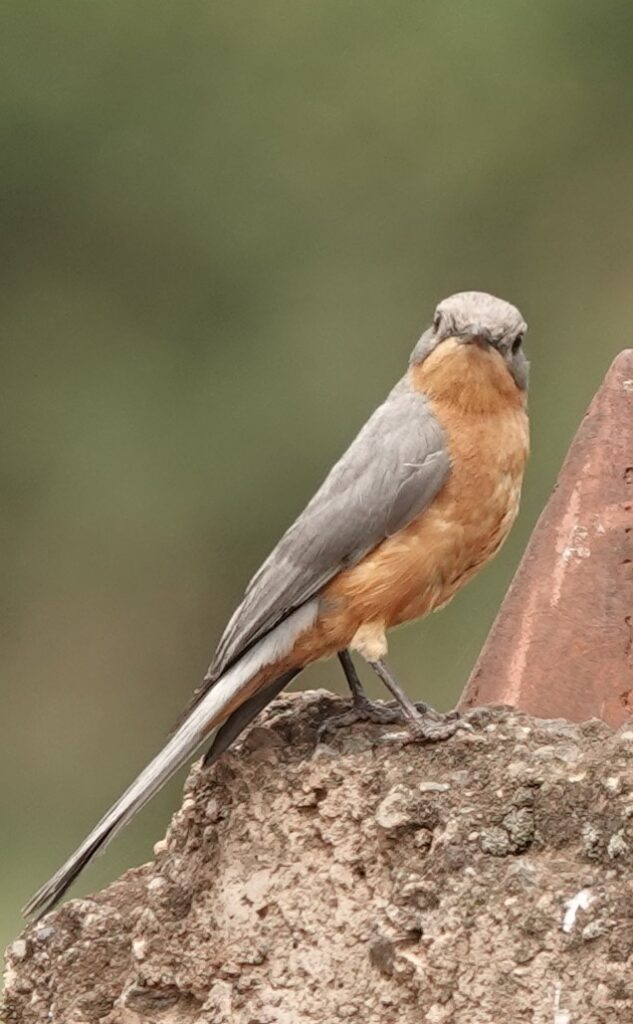
• Anteater Chat (Myrmecocichla aethiops)
• Brown-tailed Rock Chat (Oenanthe scotocerca)
• Amani Sunbird (Hedydipna pallidigaster)
• Scarlet-tufted Sunbird (Nectarinia johnstoni)
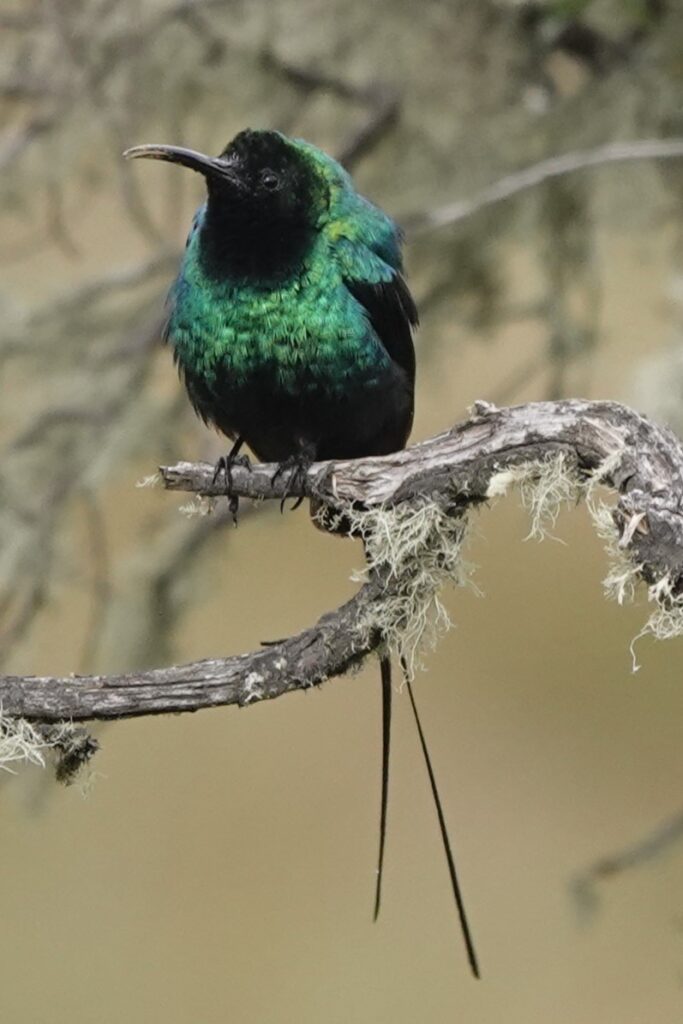
• Golden-winged Sunbird (Drepanorhynchus reichenowi)
• Eastern Double-collared Sunbird (Cinnyris mediocris)
• Tsavo Sunbird (Cinnyris tsavoensis)
• Shining Sunbird (Cinnyris habessinicus)
• Kenya Sparrow (Passer rufocinctus)
• Swahili Sparrow (Passer suahelicus)
• Parrot-billed Sparrow (Passer gongonensis)
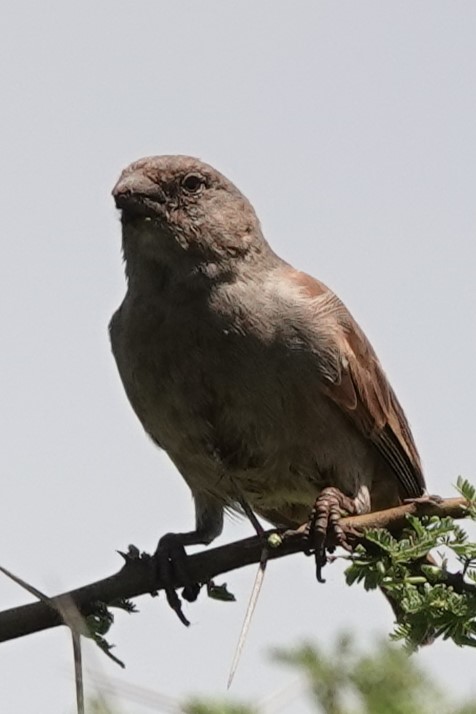
• White-billed Buffalo Weaver (Bubalornis albirostris)
• Donaldson Smith’s Sparrow-weaver (Plocepasser donaldsoni)
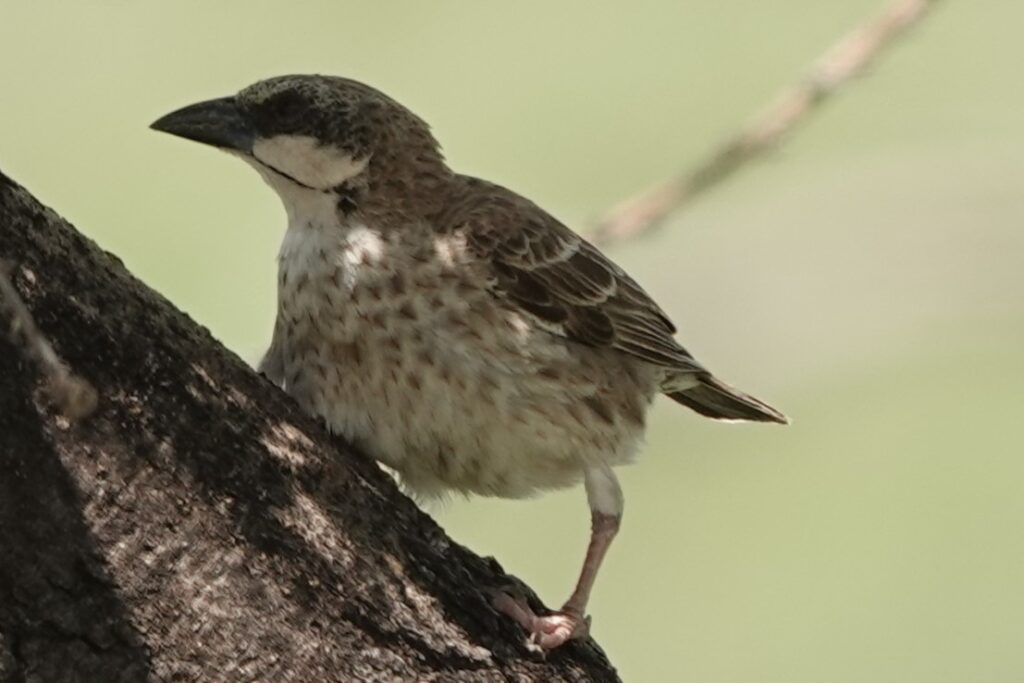
• Rufous-tailed Weaver (Histurgops ruficauda)
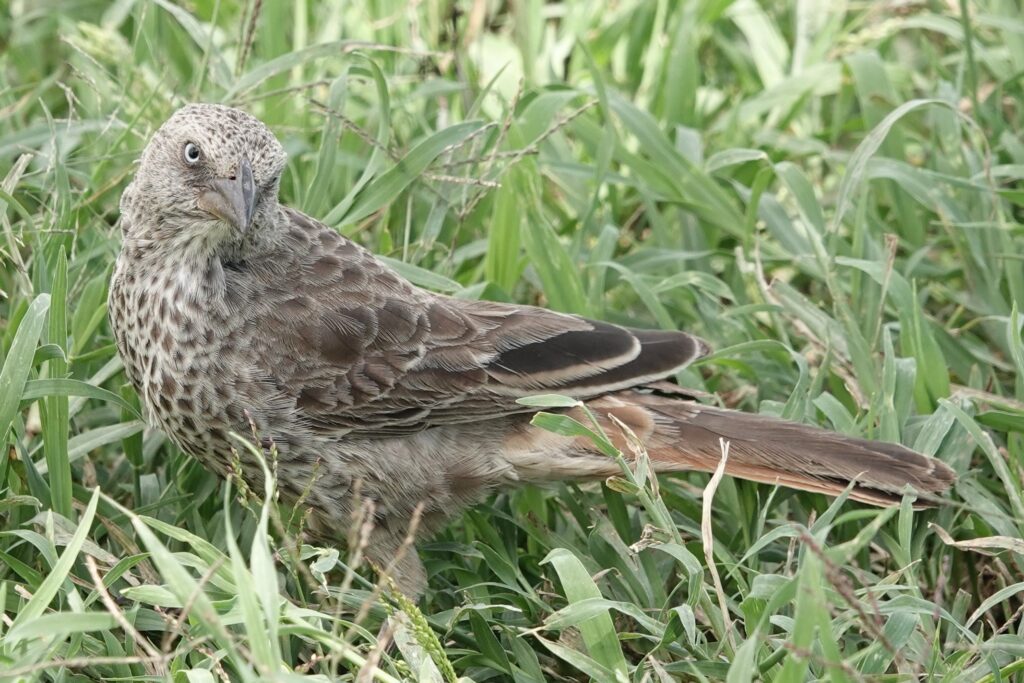
• Black-necked Weaver (Ploceus nigricollis)
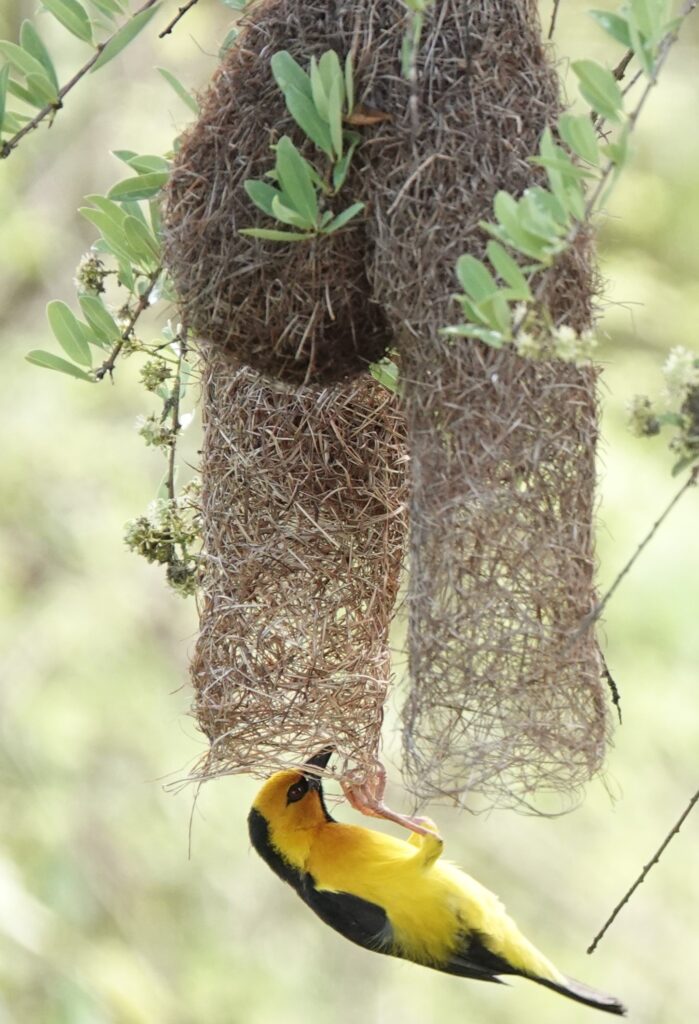
• Eastern Golden Weaver (Ploceus subaureus)

• Golden Palm Weaver (Ploceus bojeri)

• Northern Brown-throated Weaver (Ploceus castanops)
• Northern Masked Weaver (Ploceus taeniopterus)
• Speke’s Weaver (Ploceus spekei)
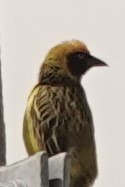
• Vieillot’s Black Weaver
• Golden-backed Weaver (Ploceus jacksoni)

• Red-headed Weaver (Anaplectes rubriceps)
• Cardinal Quelea (Quelea cardinalis)
• Zanzibar Red Bishop (Euplectes nigroventris)
• Red-cowled Widowbird
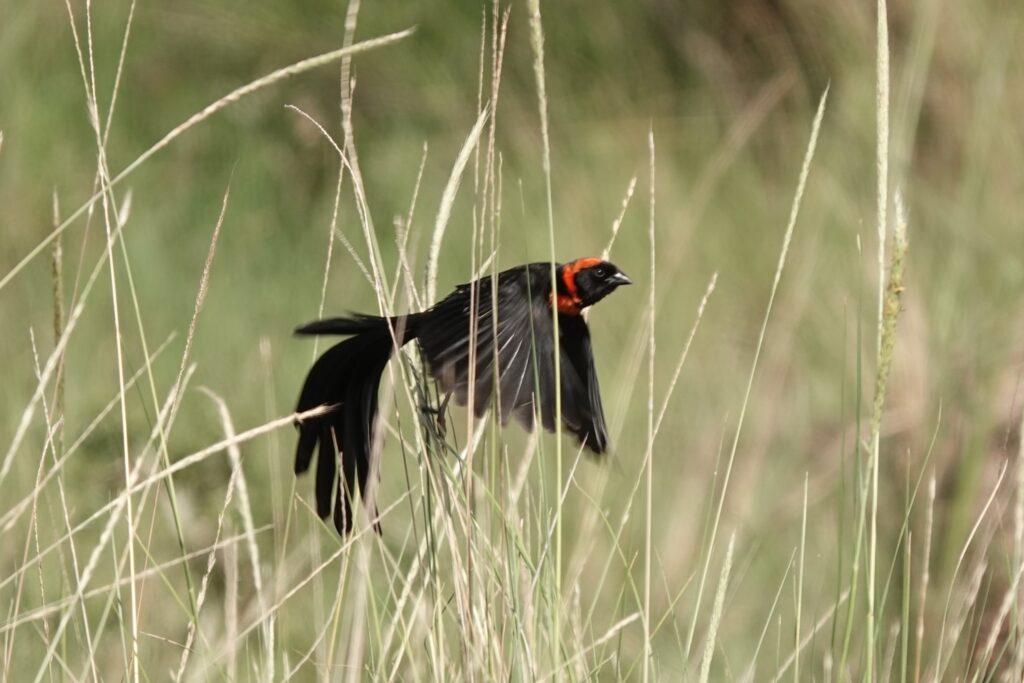
• Jackson’s Widowbird (Euplectes jacksoni)
• Grey-headed Silverbill (Spermestes griseicapilla)

• Blue-capped Cordon-bleu (Uraeginthus cyanocephalus)
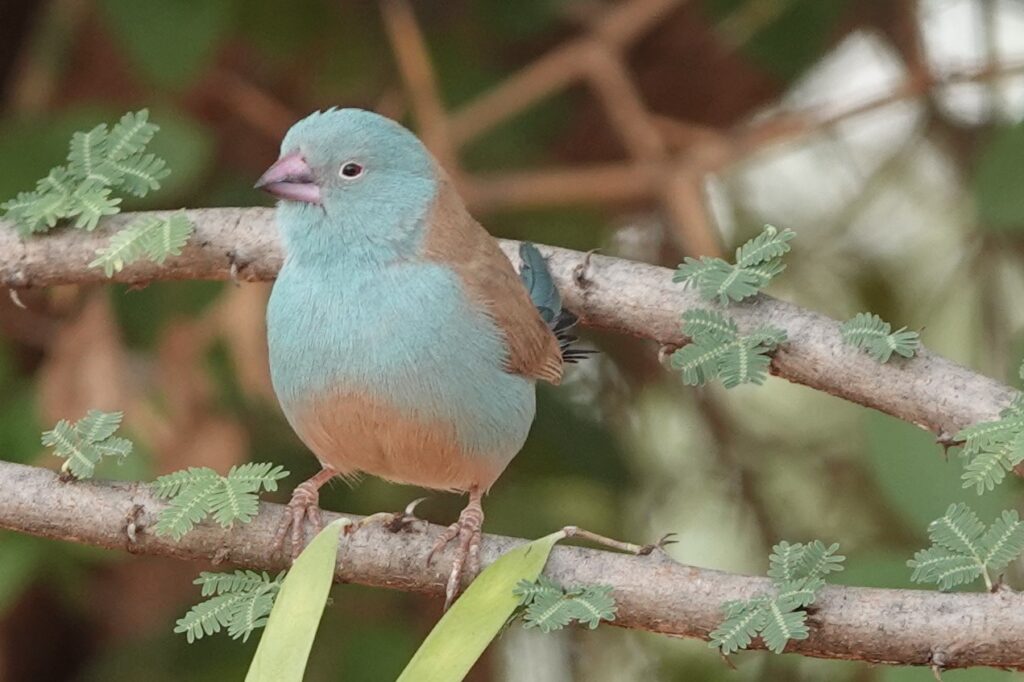
• Red-headed Bluebill (Spermophaga ruficapilla)
• Straw-tailed Whydah (Vidua fischeri)
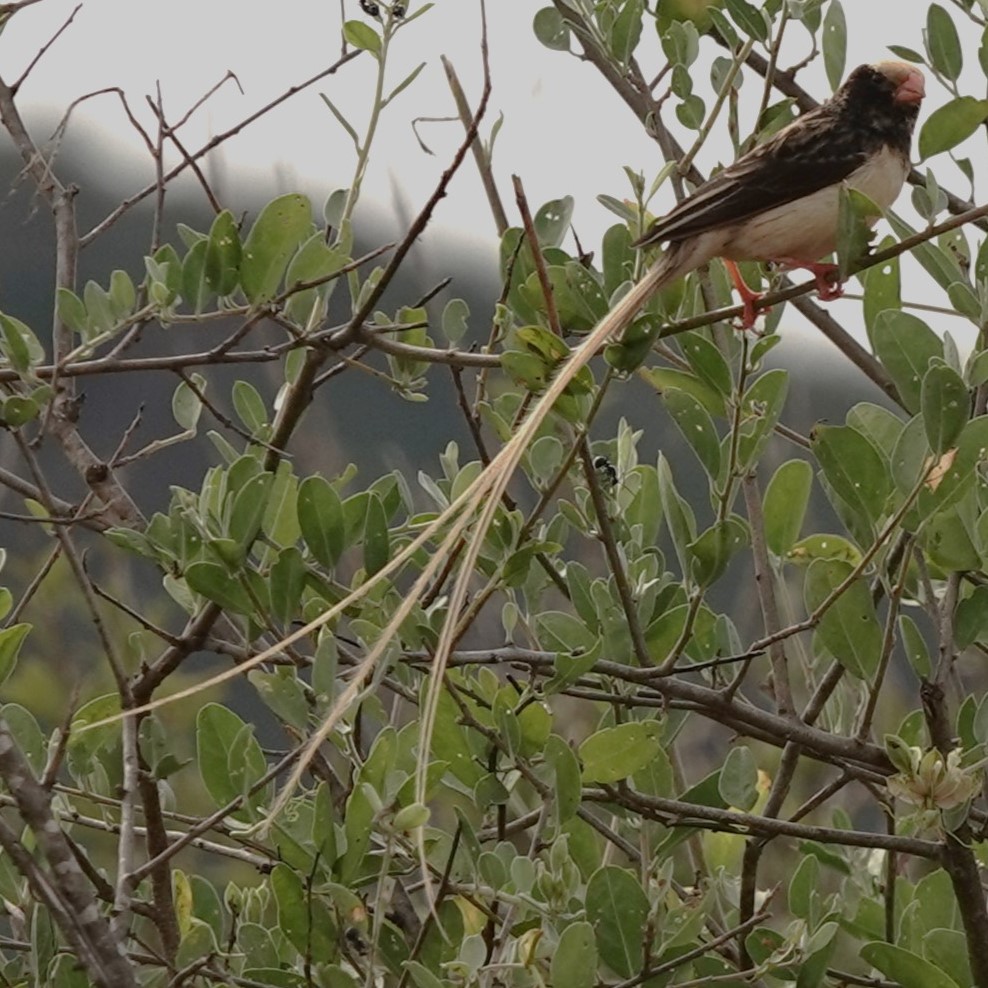
• Cuckoo-finch (Anomalospiza imberbis)

• Golden Pipit (Tmetothylacus tenellus)
• Sharpe’s Longclaw (Macronyx sharpei)
• Pangani Longclaw (Macronyx aurantiigula)
• Rosy-throated Longclaw (Macronyx ameliae)

• Malindi Pipit (Anthus melindae)
• Southern Citril (Crithagra hyposticta)
• Papyrus Canary (Crithagra koliensis)